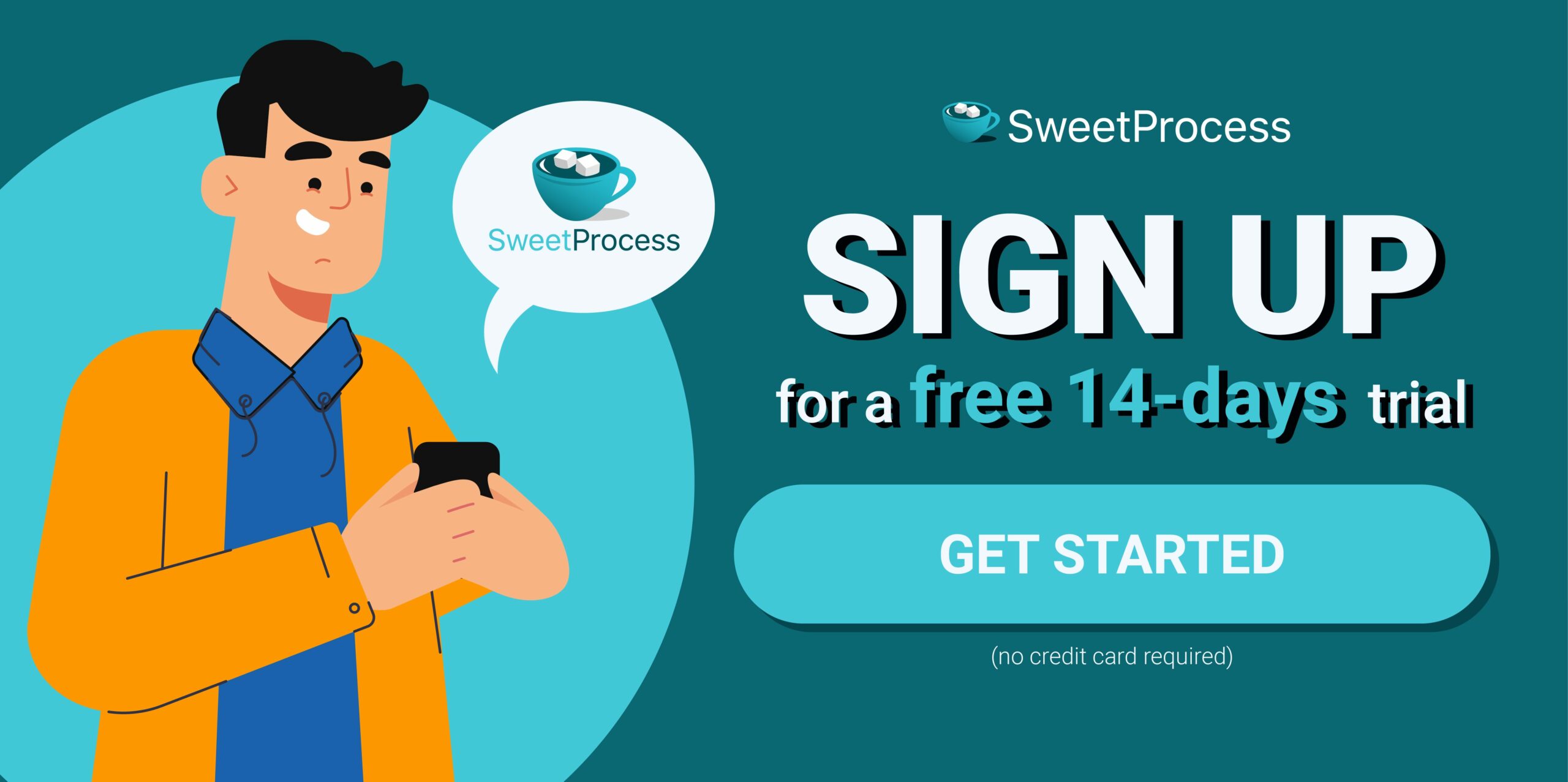Last Updated on August 21, 2025 by Owen McGab Enaohwo
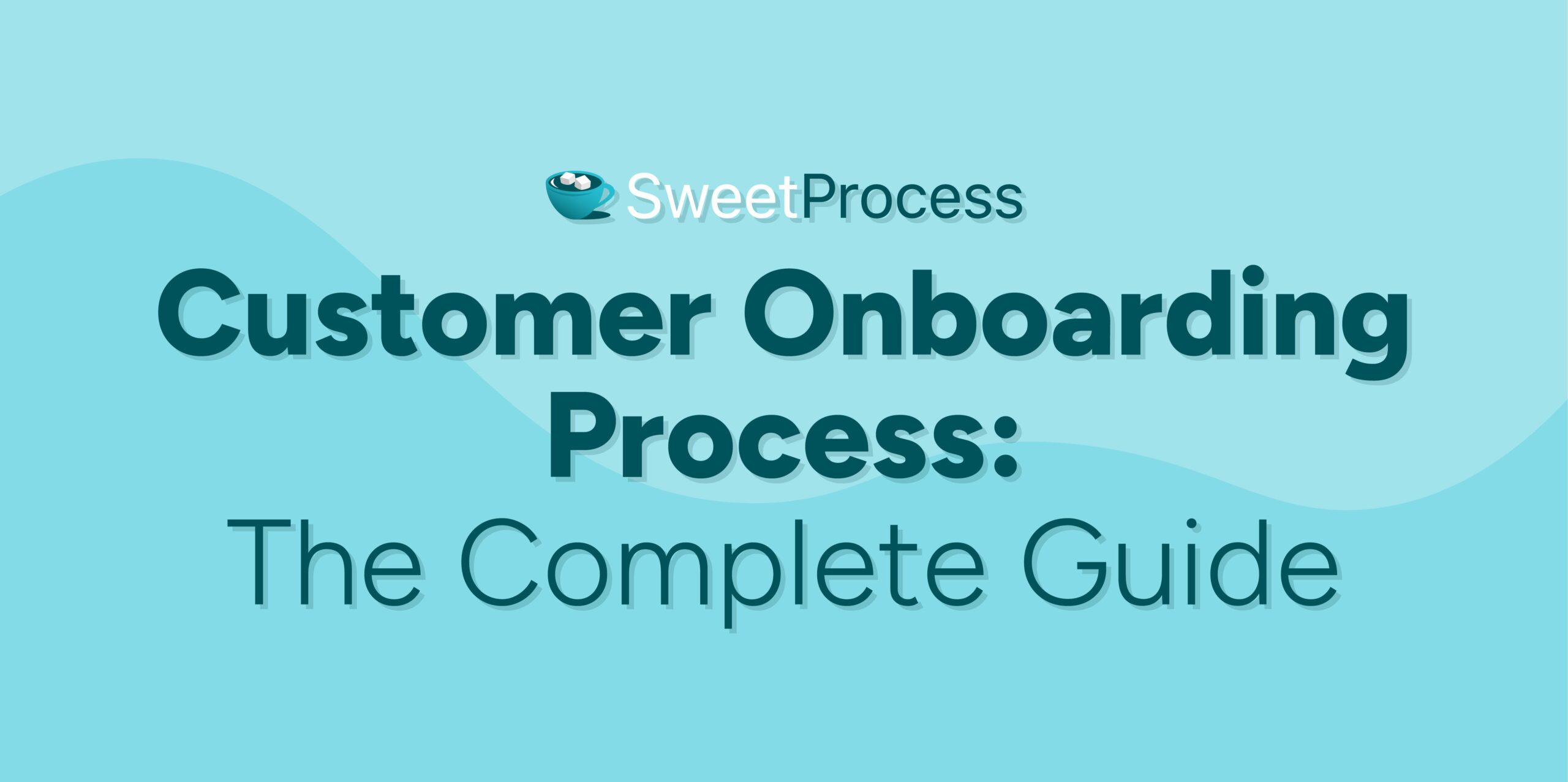
The relationship with a customer doesn’t begin and end with a sale—it’s what happens next that determines whether they stay or leave. Yes, you’ve sent them a welcome email, but can they use your product or service independently?
Customer onboarding sets the tone early on and plays a critical role in the success of your business relationships.
Without a clear and effective onboarding process, even the best product can leave customers feeling unsupported and frustrated, increasing the likelihood of customer churn—when customers stop using your product or service entirely.
It’s like walking into a new store where nobody greets you, the layout is confusing, and you leave without finding what you came for. This is how customers feel when businesses fail to guide them after purchasing or signing up.
But once you find the right approach to onboarding, you can:
- Make a strong first impression
- Ensure customers understand your product
- Help customers feel confident in their decision to choose your business
- Reduce churn
This guide will take you through the step-by-step process of developing an effective customer onboarding process and how SweetProcess can play a pivotal role in simplifying onboarding for your organization.
What You’ll Learn In This Guide:
Why Is Customer Onboarding Important?
How to Develop a Customer Onboarding Process (In 9 Simple Steps)
Streamline Your Customer Onboarding Process Using SweetProcess
Key Components of the Customer Onboarding Process
7 Customer Onboarding Examples You Can Learn From
Benefits of Customer Onboarding Process in an Organization
Customer Onboarding Best Practices and Tips
Onboard New Customers Seamlessly Using SweetProcess
What Is Customer Onboarding?
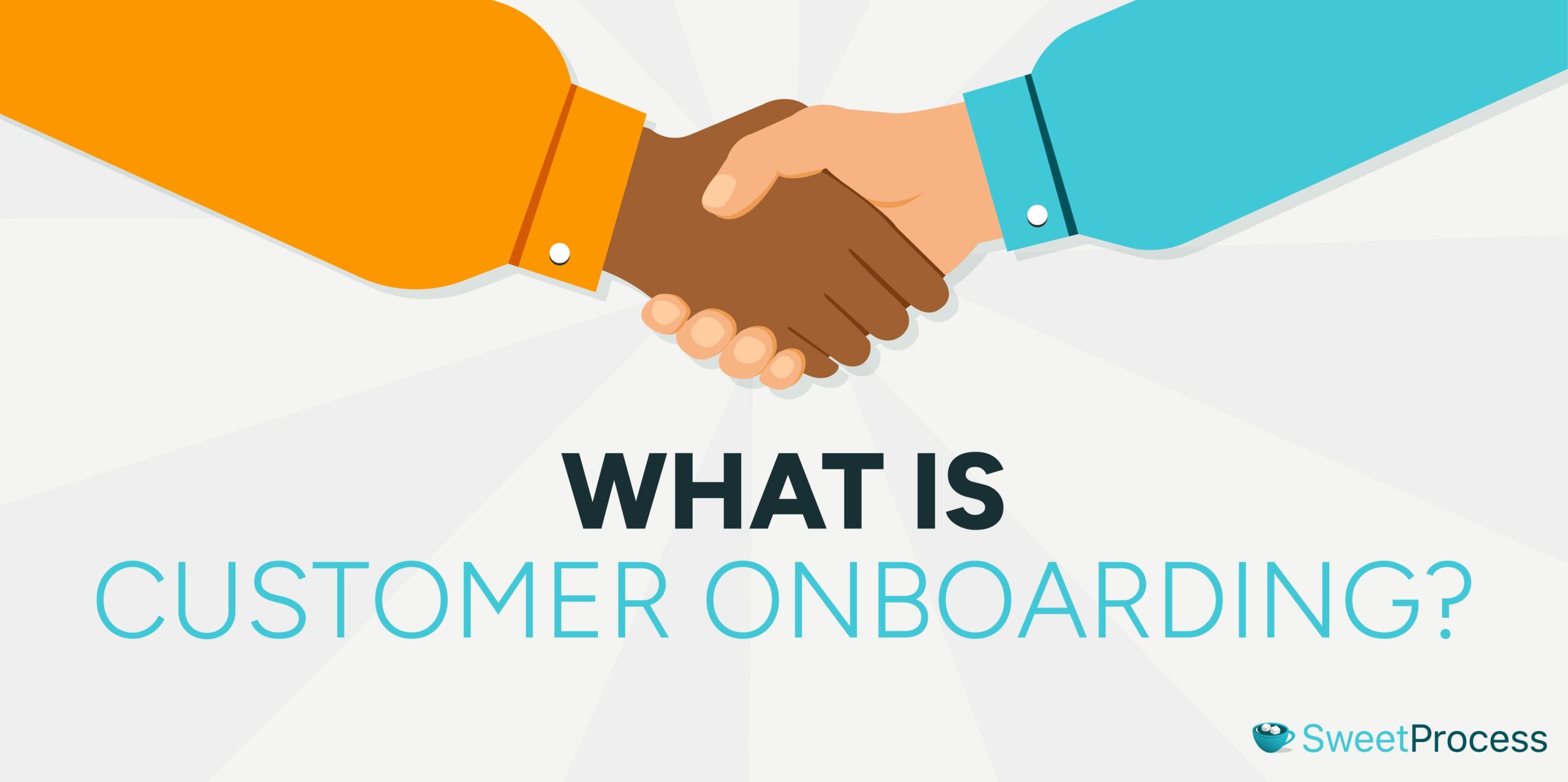
Customer onboarding involves guiding new customers through the initial stages of using your product or service, ensuring they feel supported. It begins when your sales team convinces customers to purchase a product or service until they fully adopt what your business offers.
As a critical part of the customer lifecycle, this process covers a series of structured steps such as:
- Welcome emails
- Detailed guides
- Quick tutorials
- Personalized product tutorials
- Ongoing support from your team
In the same way, you have an onboarding process for new hires. You need to develop a detailed structure for customers to keep them engaged with the brand.
Turn new customers into loyal customers and advocates with an efficient and engaging onboarding process. Try SweetProcess and start creating workflows that guide your customers every step of the way.
Why Is Customer Onboarding Important?
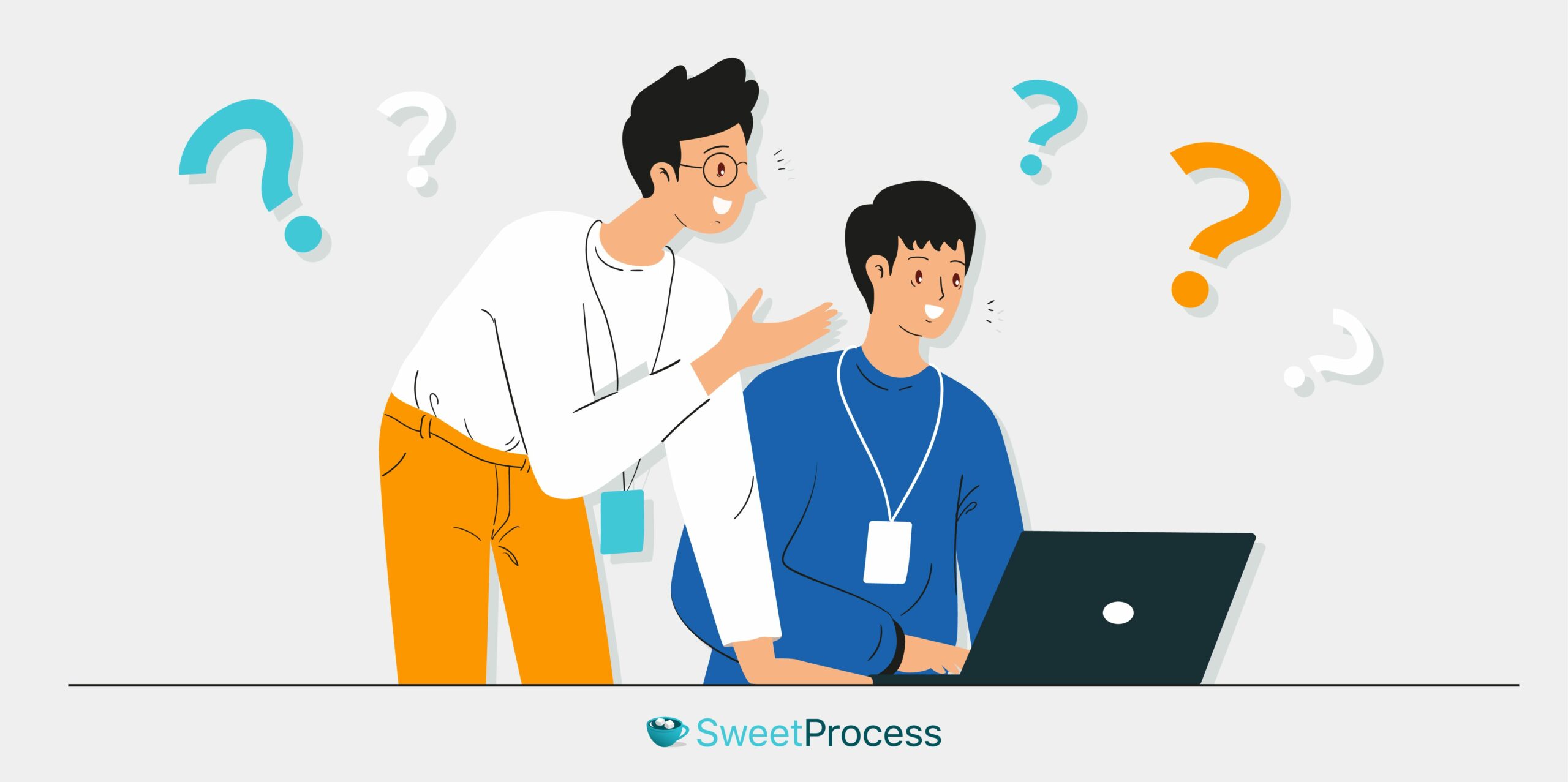
We understand how challenging it can be to juggle multiple priorities as a small business owner or customer success manager. But you can’t afford to ignore the customer onboarding process if you want to boost your customer retention rates.
Here’s how a solid onboarding strategy makes a difference:
Increases Onboarding Completion Rate
Imagine introducing a new software platform to a small business without providing tutorials or walkthroughs. There’s a high chance that they might abandon the process halfway because they are overwhelmed.
Research supports this by showing that 86% of customers stay loyal to brands that provide continuous customer education and proper onboarding. Providing step-by-step guidance on your products and services motivates them to complete onboarding.
After you send a welcome email to new customers, you can break down tutorials into short and interactive lessons or demos to keep them engaged throughout.
Reduces Churn Rate
After investing a lot of resources in acquiring customers, the last thing you want is to lose them within the first few weeks or months. A complicated or unclear onboarding process can be a dealbreaker. In fact, 74% of potential clients will switch to a competitor if they find the onboarding experience too difficult to navigate.
Customers are more likely to stick around if the onboarding process is seamless. You can address any issues early and provide clear instructions on how they can use your products or services.
Leads to Overall Business Growth
Is your goal to grow your business? A proper client onboarding process can help. Satisfied customers will be the first people to recommend your business to others, bringing in more sales. They are also more likely to make repeat purchases, which increases the customer’s lifetime value.
All these benefits translate to higher profits, which can drive growth. Making a first impression is vital for your onboarding strategy.
Increases Customer Engagement
Say your business runs a fitness app that uses interactive elements during onboarding, encouraging users to set goals and track progress from day one. You also provide personalized support to address any challenges. This strategy enables you to capture your audience right away.
The more excited they are to engage with your app, the more likely they are to use it for the long term.
Engaged customers will explore the products or services and provide feedback to improve their experience. Use onboarding to build your connection with the customer and showcase the product’s value.
Don’t let your customers slip through the cracks. SweetProcess gives you the tools to create a streamlined, engaging, and effective onboarding flow that drives business growth. Sign up for a free trial now!
How to Develop a Customer Onboarding Process (In 9 Simple Steps)
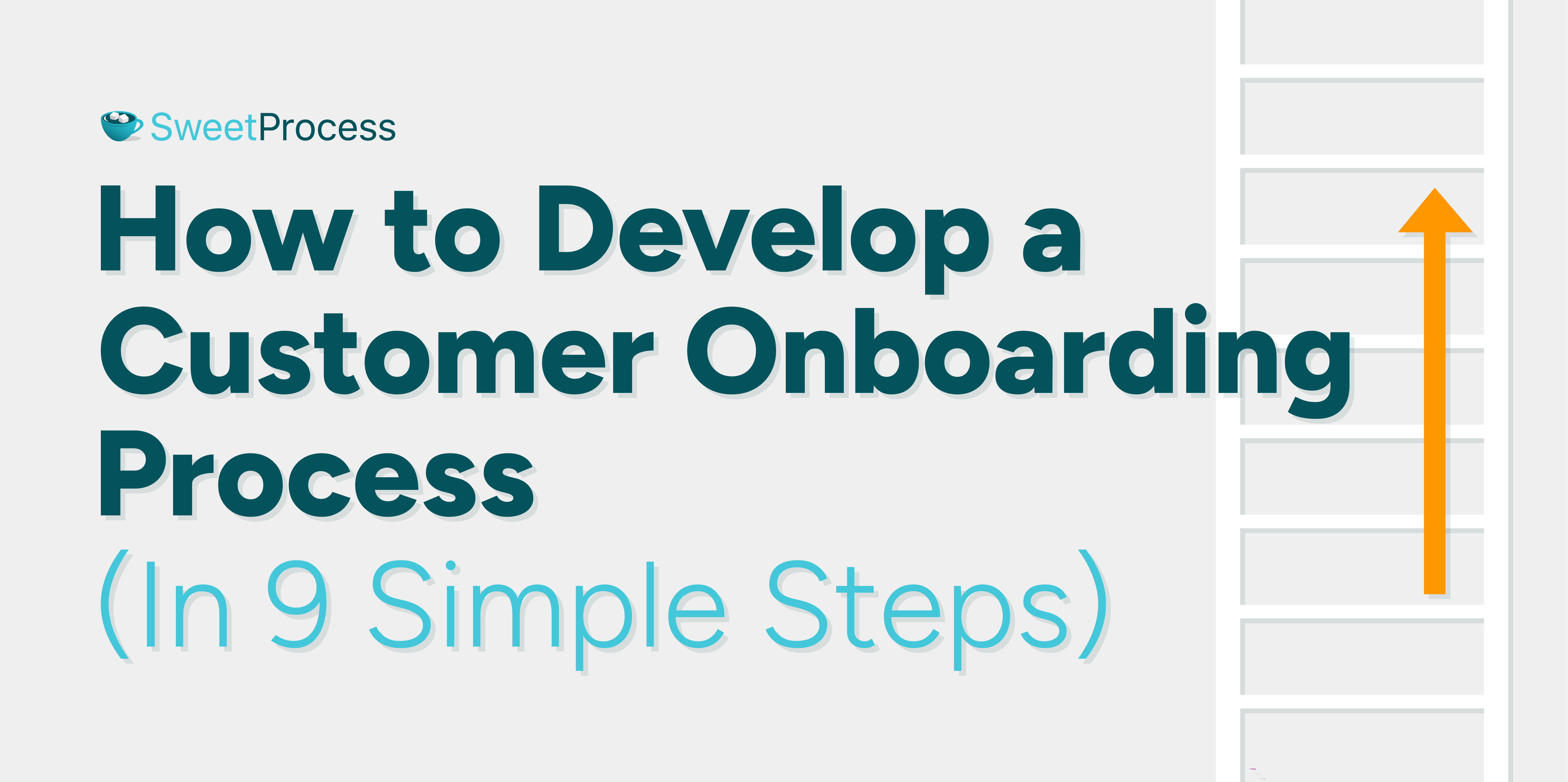
You just acquired a new customer. How do you lay the foundation for a long-lasting relationship? Here are nine simple yet effective steps to develop a seamless customer onboarding process.
Step 1. Build an Intuitive Signup Process
The first interaction with your customer is the signup process. A clunky or confusing signup process can quickly discourage users, leading to higher drop-off rates. On the other hand, an intuitive and user-friendly process ensures customers are motivated to continue their customer journey.
Here are some key things to make your signup process seamless:
- Aim for simplicity. Request only essential information and avoid unnecessary form fields.
- Use clear and concise language.
- Allow users to sign up using their email, Google, or Facebook accounts with just a few clicks.
- Add a progress bar feature on signup forms to reassure customers that the process won’t take long.
Step 2: Create an Automated Welcome Email
In this era of artificial intelligence (AI), you can create an automated welcome email for all new customers. You can increase the engagement by personalizing the email or adding a call to action.
A welcome email gives users clear directions on what to do after signing up. It should also reflect your brand’s personality and provide a brief product or service overview. Additionally, you can add helpful links to resources or an invitation to join a community to keep your audience engaged.
Step 3: Customized Greeting
Instead of a generic “Hello, customer,” consider using a customized greeting like “Hi, Martin! We’re thrilled to have you on board! Let’s get started on achieving [specific goal].” You can also reference any other specific details you know about them, such as their industry or company size.
Acknowledging the user goes a long way in building trust and setting the foundation for a stronger customer relationship. It shows the customer that your business understands their unique needs. Once you have that emotional connection, retaining new customers for longer becomes easier.
Step 4: Customize the Product and Setup
Companies like Spotify ask new users to select their favorite music genres and artists during onboarding. Based on this input, the platform curates personalized playlists immediately, giving users an instant sense of value.
You can borrow a leaf from such organizations and customize options to ensure the product meets customer expectations. In addition to offering relevant recommendations, you can pre-populate specific fields and offer tailored tutorials. This way, you simplify the onboarding process. Effective training management can also speed up onboarding for new hires by quickly familiarizing them with your company’s tools and processes, further reducing the learning curve.
Step 5: Assign Onboarding Tasks
Since most onboarding instructions come from your business, keeping the customer engaged is good. You can achieve this by giving them small, actionable tasks that help them interact with your product.
For instance, if you operate a project management tool, you could guide new and existing customers by sending daily emails or notifications to complete some tasks. Here’s an example:
- Day 1: Thank you for signing up to our software
- Day 2: Tutorial to create their first project
- Day 3: How to add or invite new team members
- Day 4: How to assign tasks using the tool
Breaking down the onboarding process into manageable steps makes it less overwhelming and encourages users to explore further. It also builds confidence as customers see immediate results from their efforts.
Step 6: Product Walkthroughs or Automated Feature Callouts
It can be intimidating to use a new product or service. Think of all the features you encounter when you sign up for a new app or software. Interactive walkthroughs and callouts come in handy for first-time users by familiarizing them with essential functionalities.
Video is one of the most popular mediums for welcoming new clients. Studies show 97% of customers prefer it during onboarding since it simplifies information. Investing in this process reduces confusion and accelerates product adoption.
Step 7: Provide a Knowledge Base
What if you had all the onboarding information in one place? A knowledge base makes it possible for customers to find answers independently. You can add FAQs, step-by-step guides, video tutorials, and use cases on one platform and share them with the customers as part of the welcome process.
With a knowledge base, customers can troubleshoot issues and explore advanced features at their own pace. This reduces frustration among your new users and reliance on support teams.
Step 8: Build a Reward System
Customers like to feel appreciated. You can make the onboarding process more engaging by making it fun. For instance, using a customer onboarding software with gamification features allows you to introduce rewards like badges, points, or discounts for completing onboarding milestones or providing referrals.
This makes the process enjoyable and encourages active participation. This approach increases the retention rates because customers are fully engaged with the product.
Step 9: Schedule Check-Ins
Communication with the customer should continue even after the first days. It’s good to plan regular check-ins. The good thing is that you don’t have to do it manually. You can automate your follow-ups and personalize emails using your business tools.
For instance, you can send a check-in email 14 days or a month after onboarding to:
- Address any concerns
- Collect feedback
- Provide additional training
Proactive check-ins could reduce churn rates because the customers feel valued. You can also boost your opportunities for upselling or referrals.
Streamline Your Customer Onboarding Process Using SweetProcess
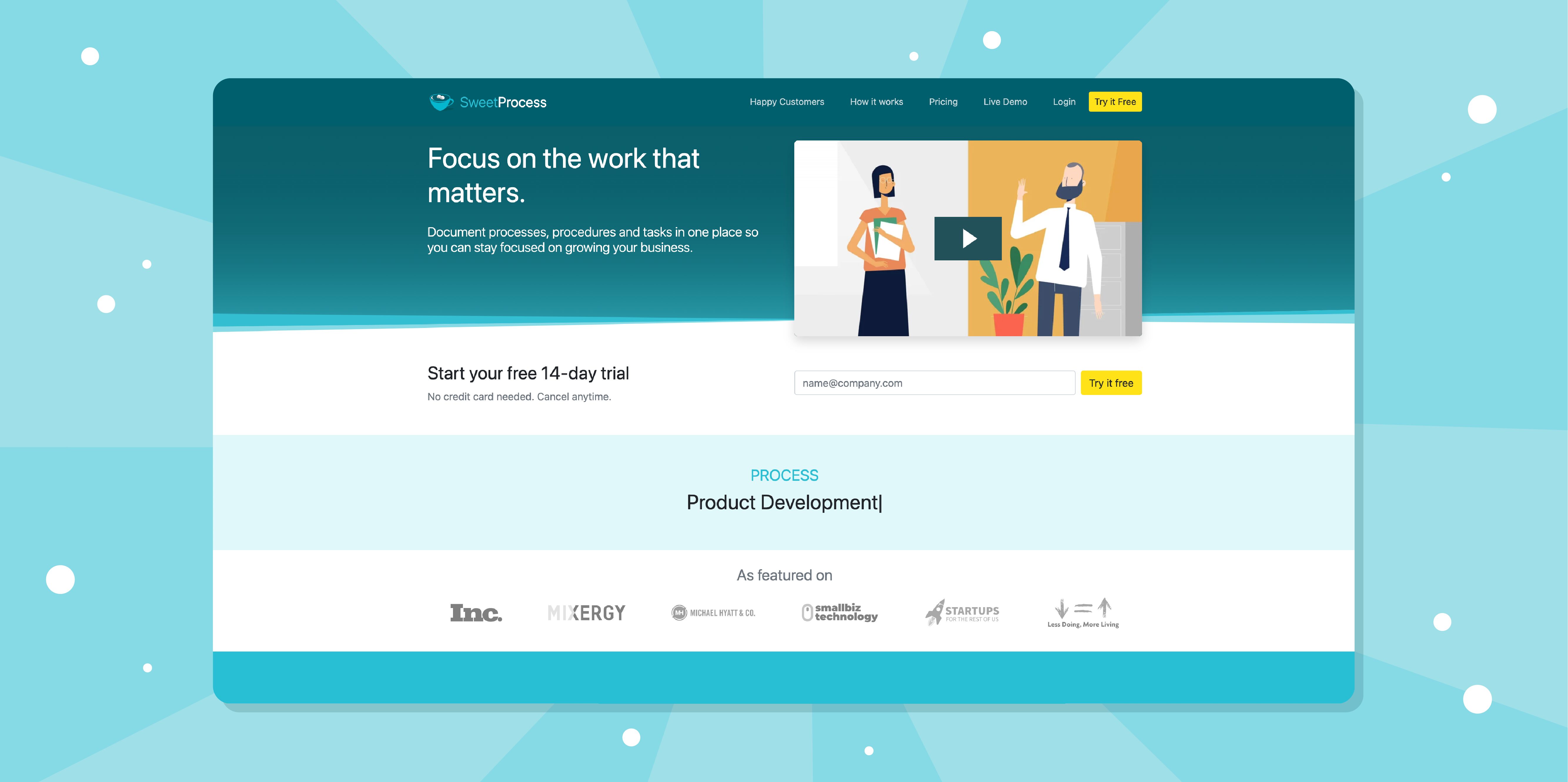
Managing your onboarding process can be simple. With tools like SweetProcess, you can create a customer onboarding checklist, manage a knowledge base, and assign onboarding processes to your team members.
Here’s how to use SweetProcess for customer onboarding:
Educate New Customers on Your Company’s Procedures and Processes
With SweetProcess, you can document the step-by-step instructions for using your product or service. You can organize these procedures in an easy-to-navigate format so new customers can familiarize themselves without needing constant support.
Follow these steps to create procedures:
- Log in to your SweetProcess account.
- Select “Procedures” and click “Create Procedure.”

- Include a procedure title.

- You can include images, tags, and videos to make your procedure more comprehensive.
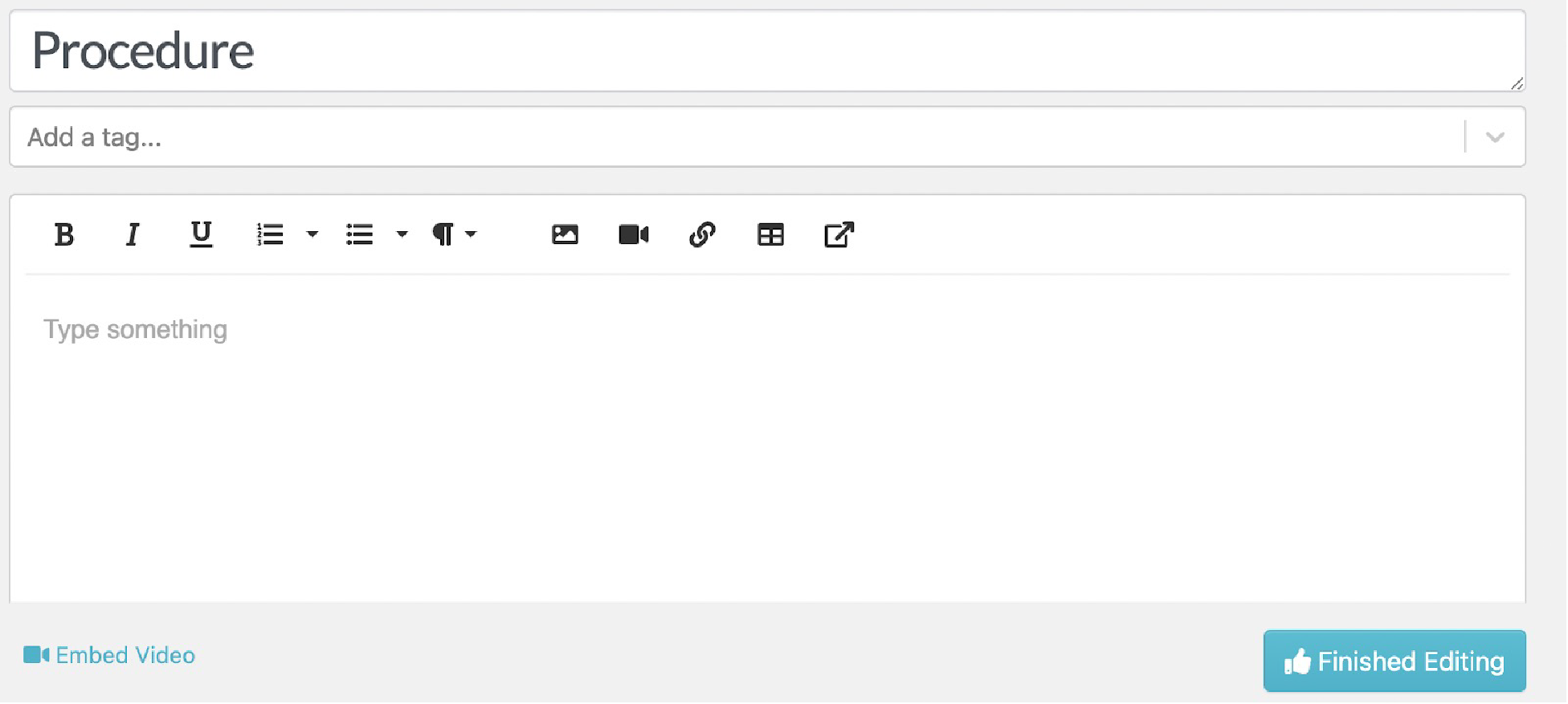
SweetProcess also allows you to create a procedure much faster using AI. Once you add the title, SweetAI will generate the procedure in seconds.
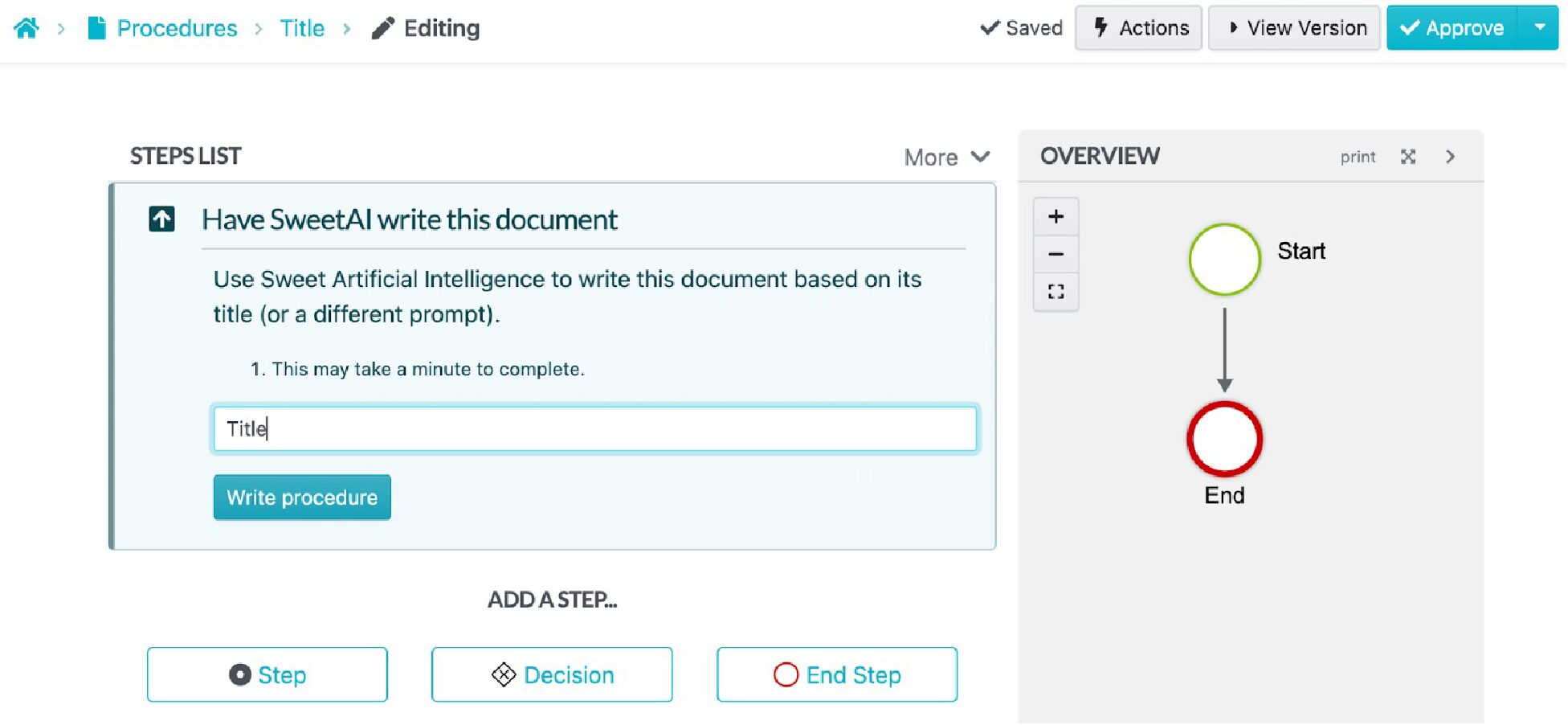
To create a process on SweetProcess, use the same steps.
- Tap “Processes” on the dashboard.
- Select “Create Process.”

- Include your process title.
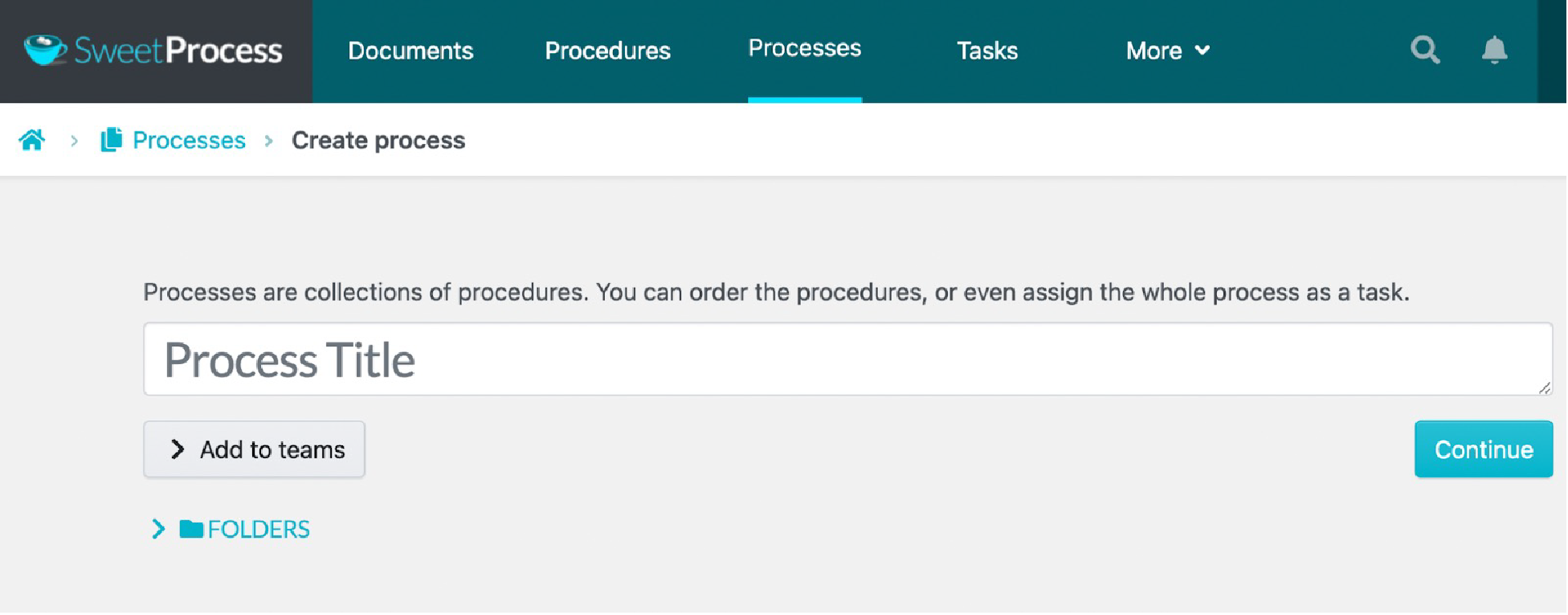
- Make the process detailed by adding relevant images, tables, and videos.
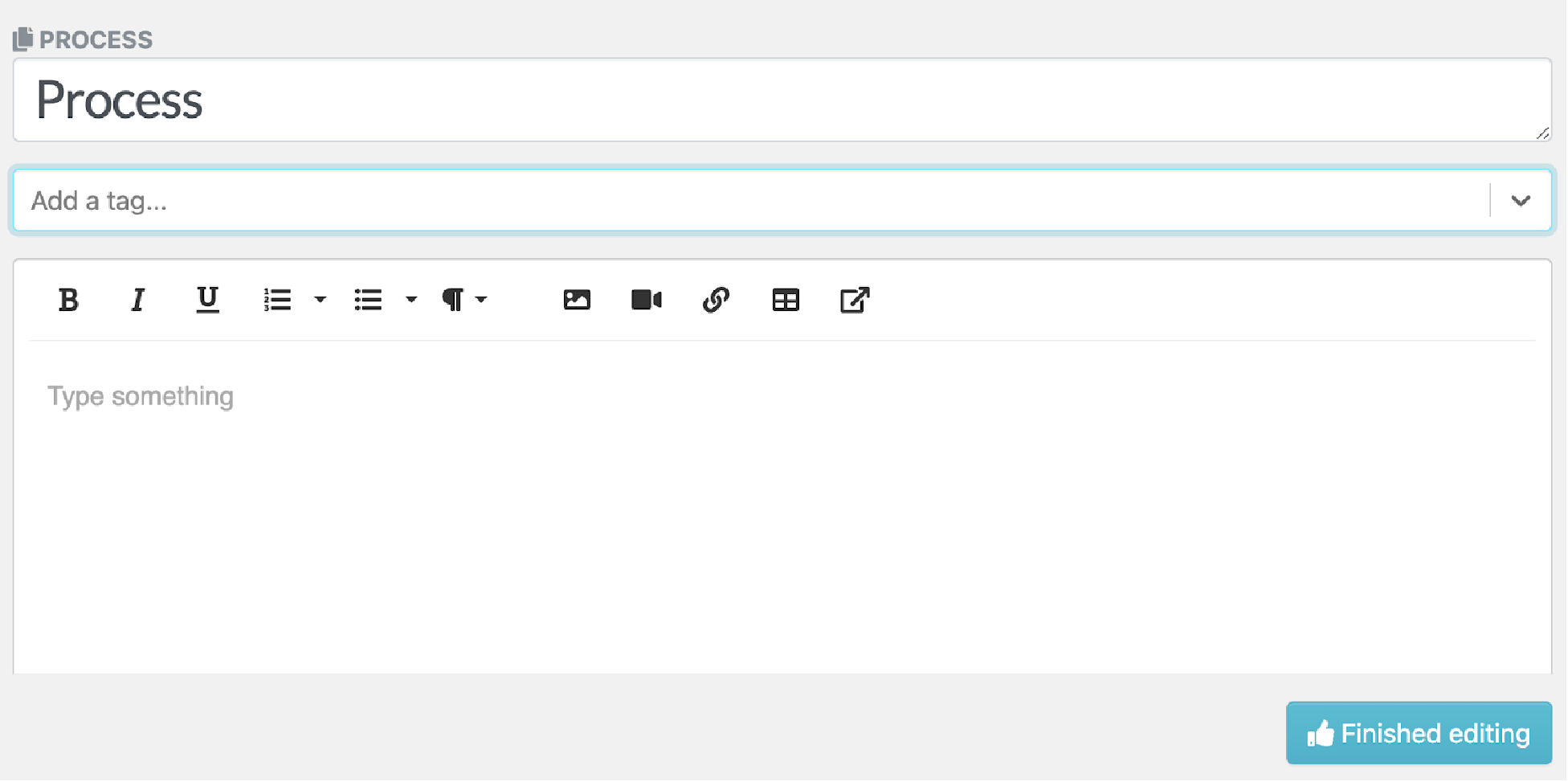
- Save changes once done.
The processes and procedures will be visible on the main dashboard. Customers can view them to learn more about your products and services.
Create a Customer Onboarding Checklist That’s Easy to Follow
An onboarding checklist simplifies onboarding, breaking down your process into simple, actionable items, such as creating an account, setting up their profile, or completing a product tutorial.
Here’s how to use SweetProcess:
- Click on the “Processes” tab on the dashboard, then click “Create Process.”

- Add a process, “Customer Onboarding,” and assign it to a specific team.
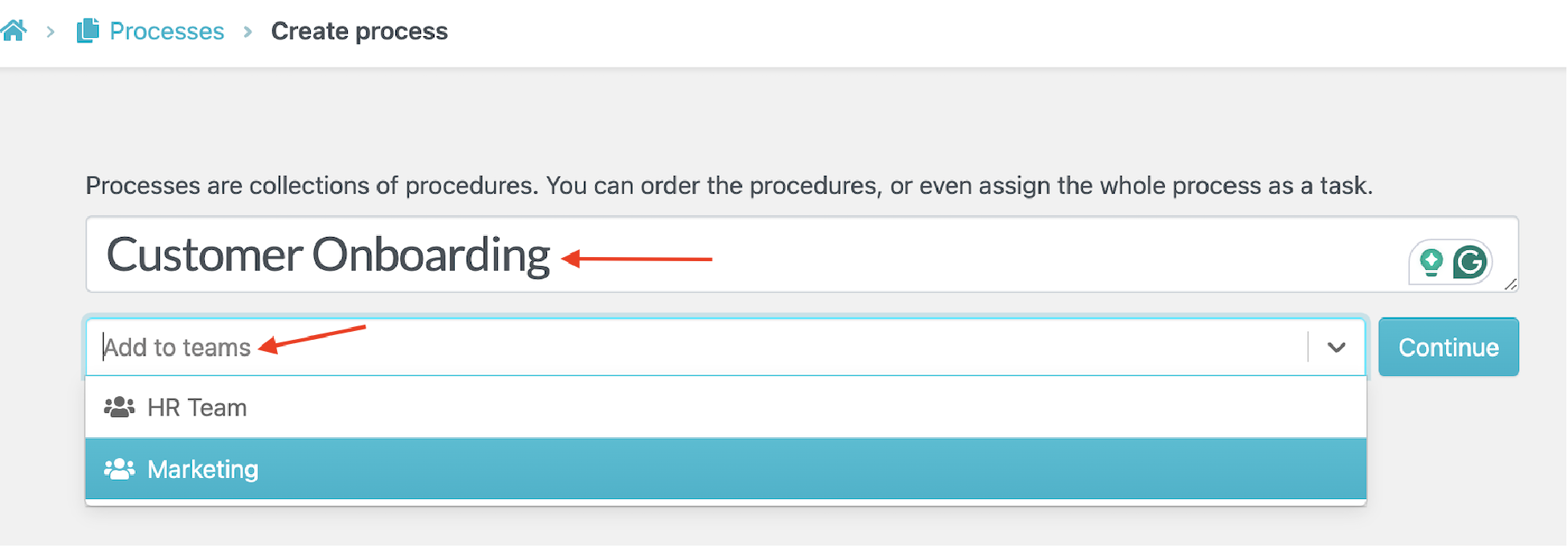
- Add more details to your process by adding steps on the next tab.
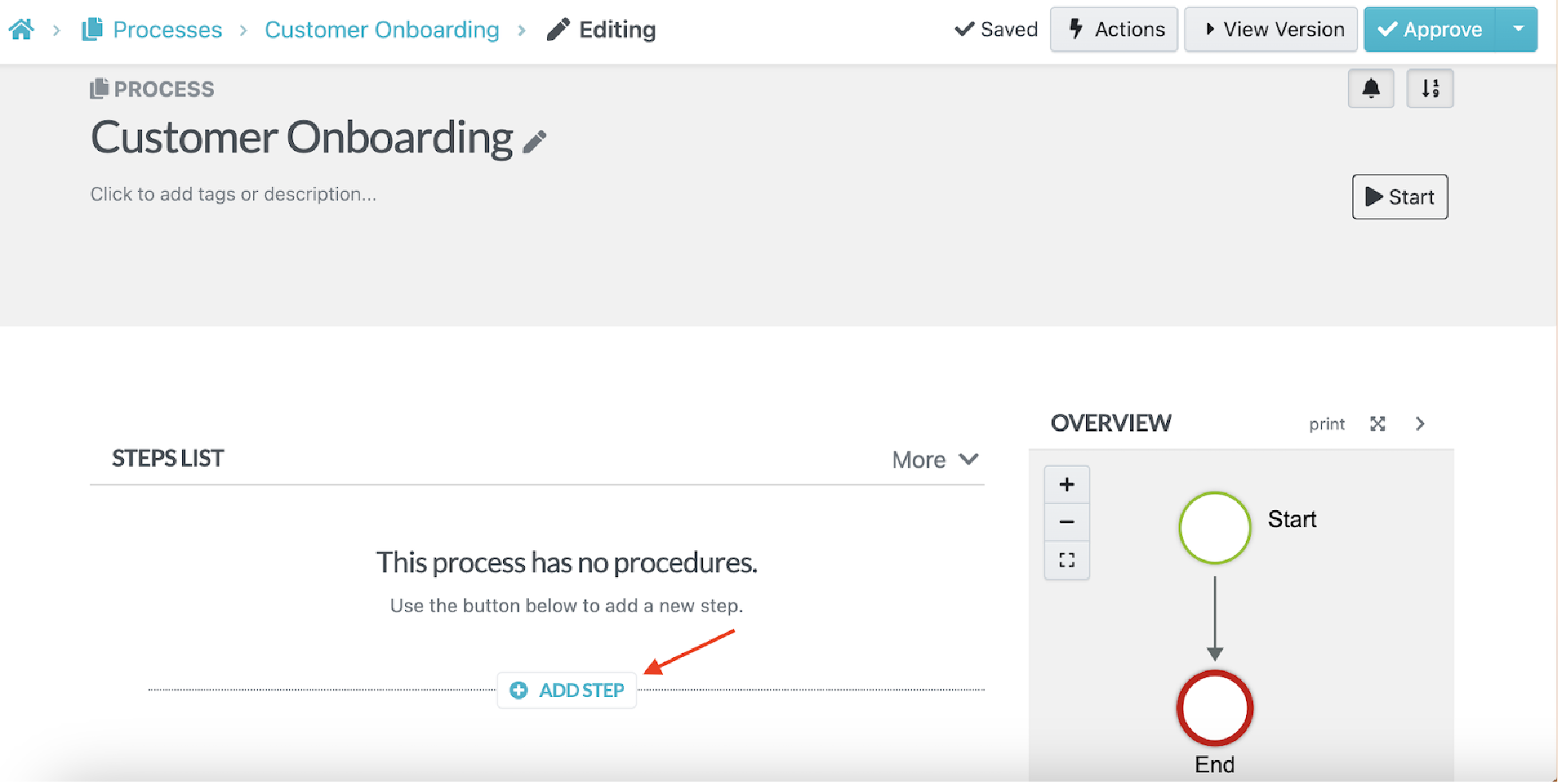
- Add more steps to create your checklist.
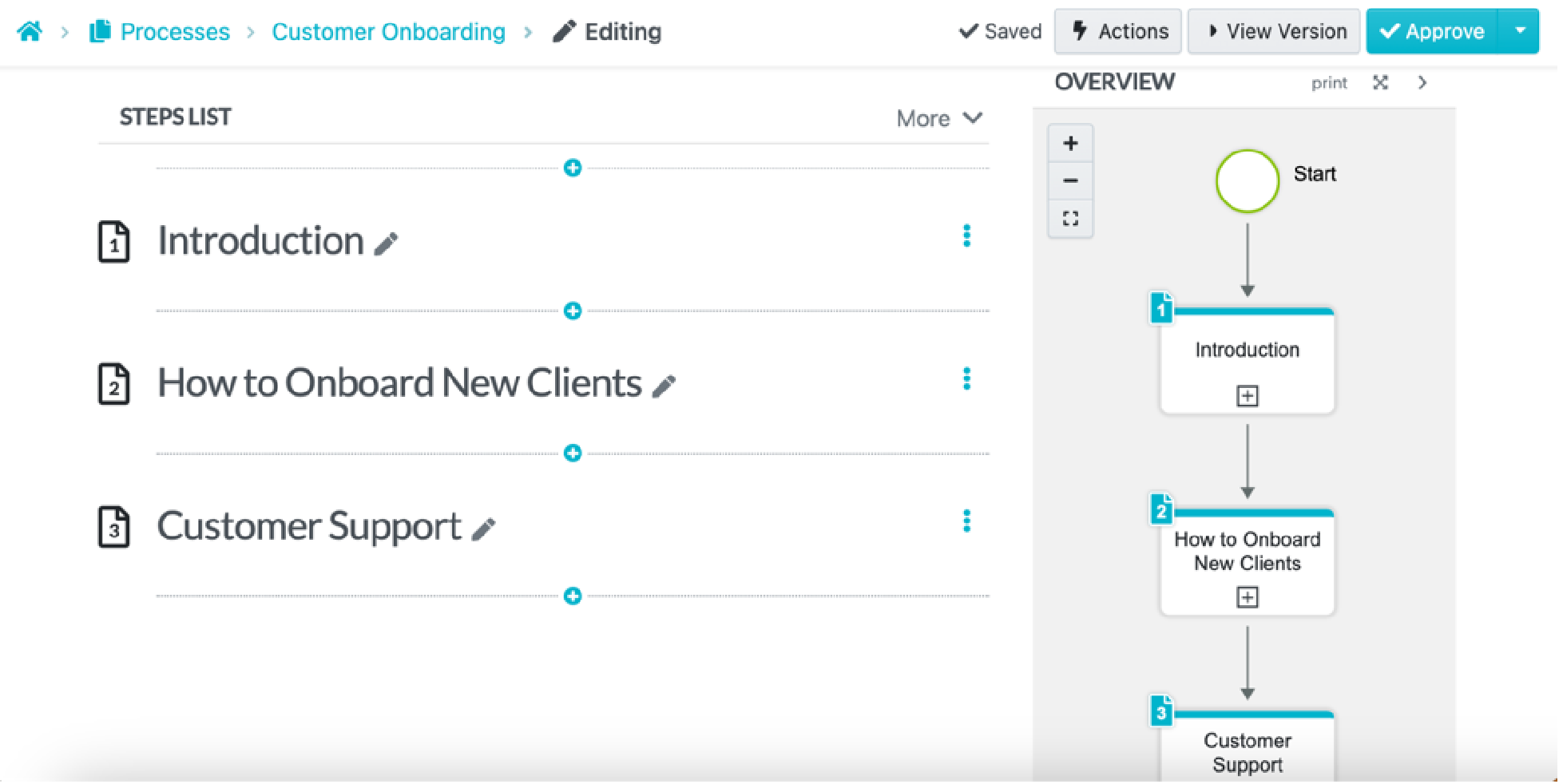
- Once you add all the steps, save the changes and share the process for approval.

Assign the Customer Onboarding Process to a Team Member
Successful onboarding often requires a dedicated point of contact. With SweetProcess, you can assign specific tasks to team members, ensuring accountability.
For example, when a new customer signs up for your service, you can assign an onboarding specialist to guide them through the process. SweetProcess makes tracking task progress easy and ensures nothing falls through the cracks.
Follow these steps:
- Click “Tasks” on the main menu.
- Select “Assign Tasks.”

Assign the specific task to a team member. You can also include the task name, employee name, and date to keep track.
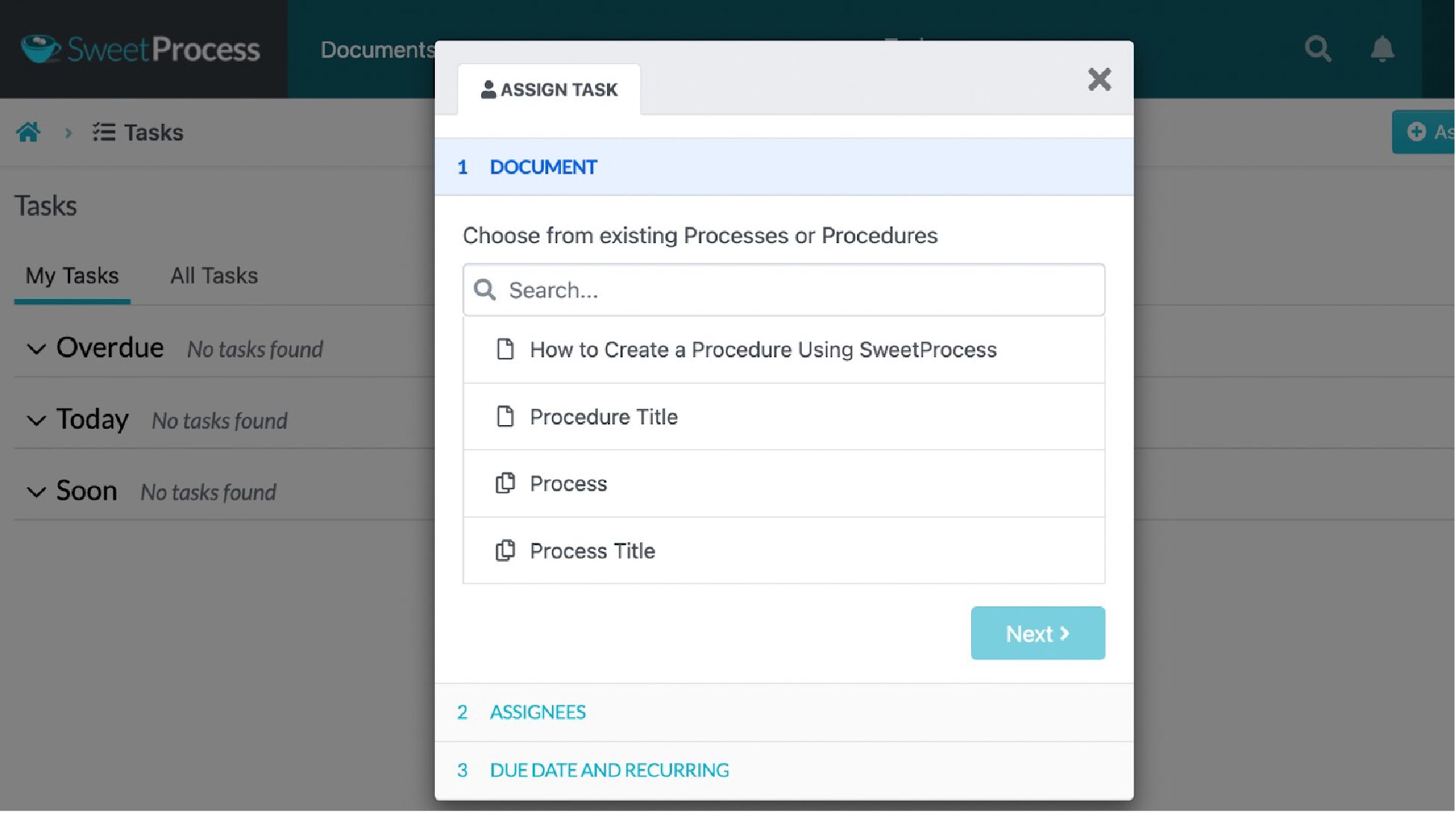
Additionally, you can view the entire list of tasks. Click “All Tasks” and use the filters to find the specific one.

Give Customer Access to Your External Knowledge Base
SweetProcess lets you create a customer-facing knowledge base where they can find answers to common questions, learn about features, and troubleshoot issues. Here’s how to go about it:
- Select the “More” button.
- Click “Knowledge Base.”
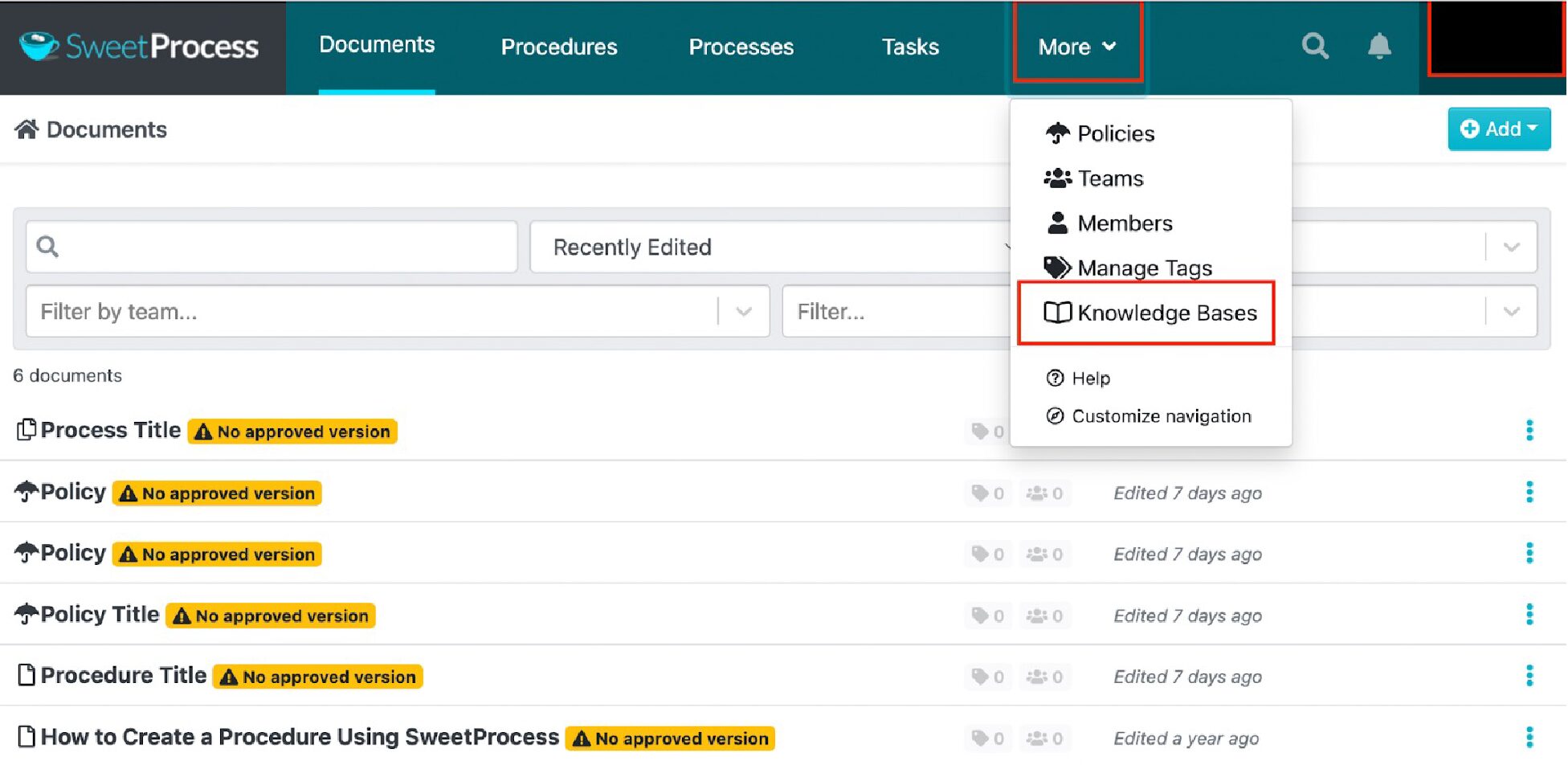
- On the next tab, tap “Create Knowledge Base.”

- Include a title for your knowledge base.
- Tap “Continue.”

- Click the pencil icon to edit and add details to your knowledge base.
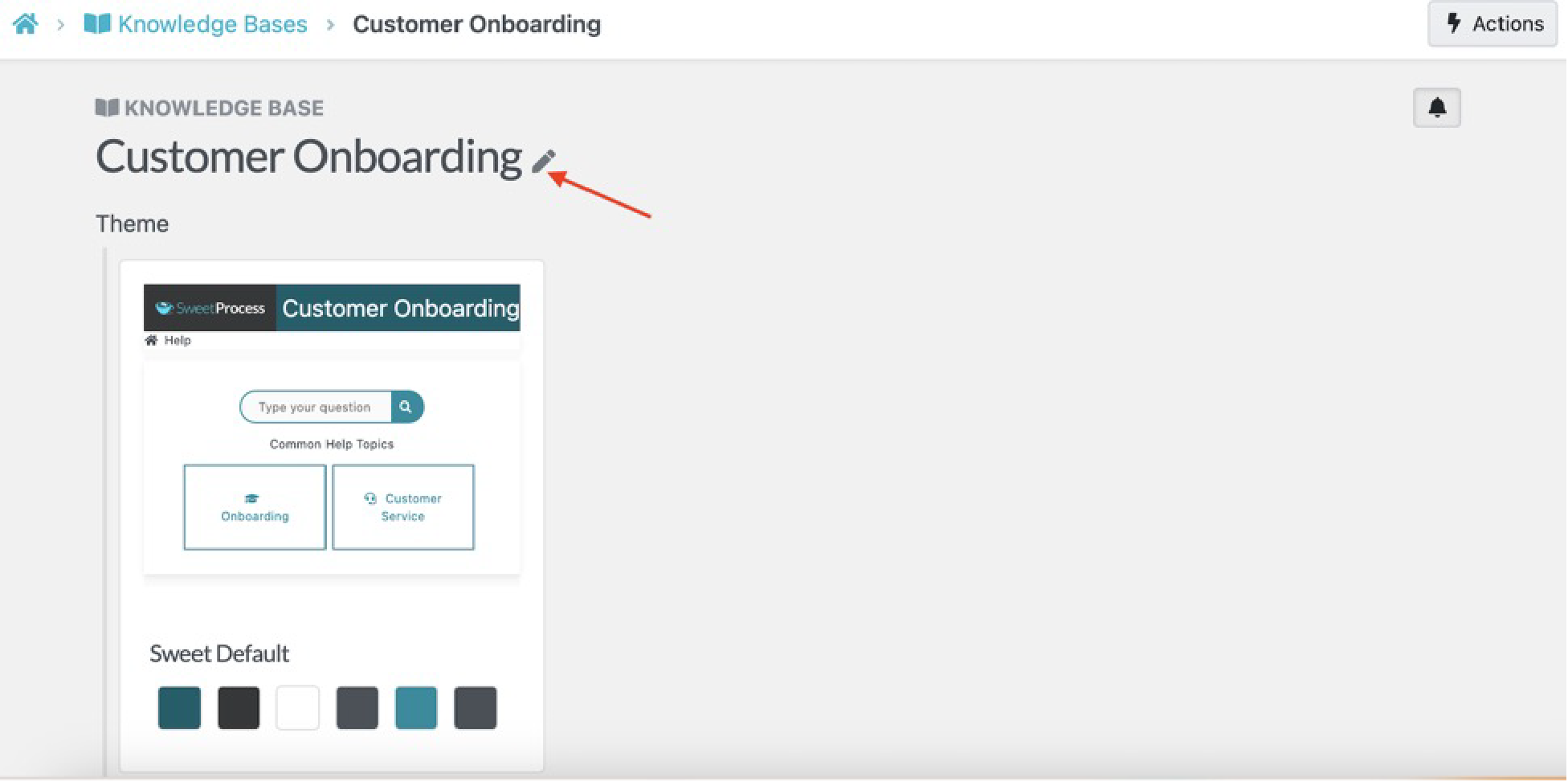
Since the knowledge base is for your customers, choose the public option under the control access section.

Then, add a URL to make it accessible.
Manage Your Company’s Knowledge Base
Keeping your knowledge base up to date is crucial for onboarding. SweetProcess allows you to seamlessly edit, update, and organize your internal and external documentation. To manage your knowledge base:
- Select “Knowledge Bases” on the main menu.
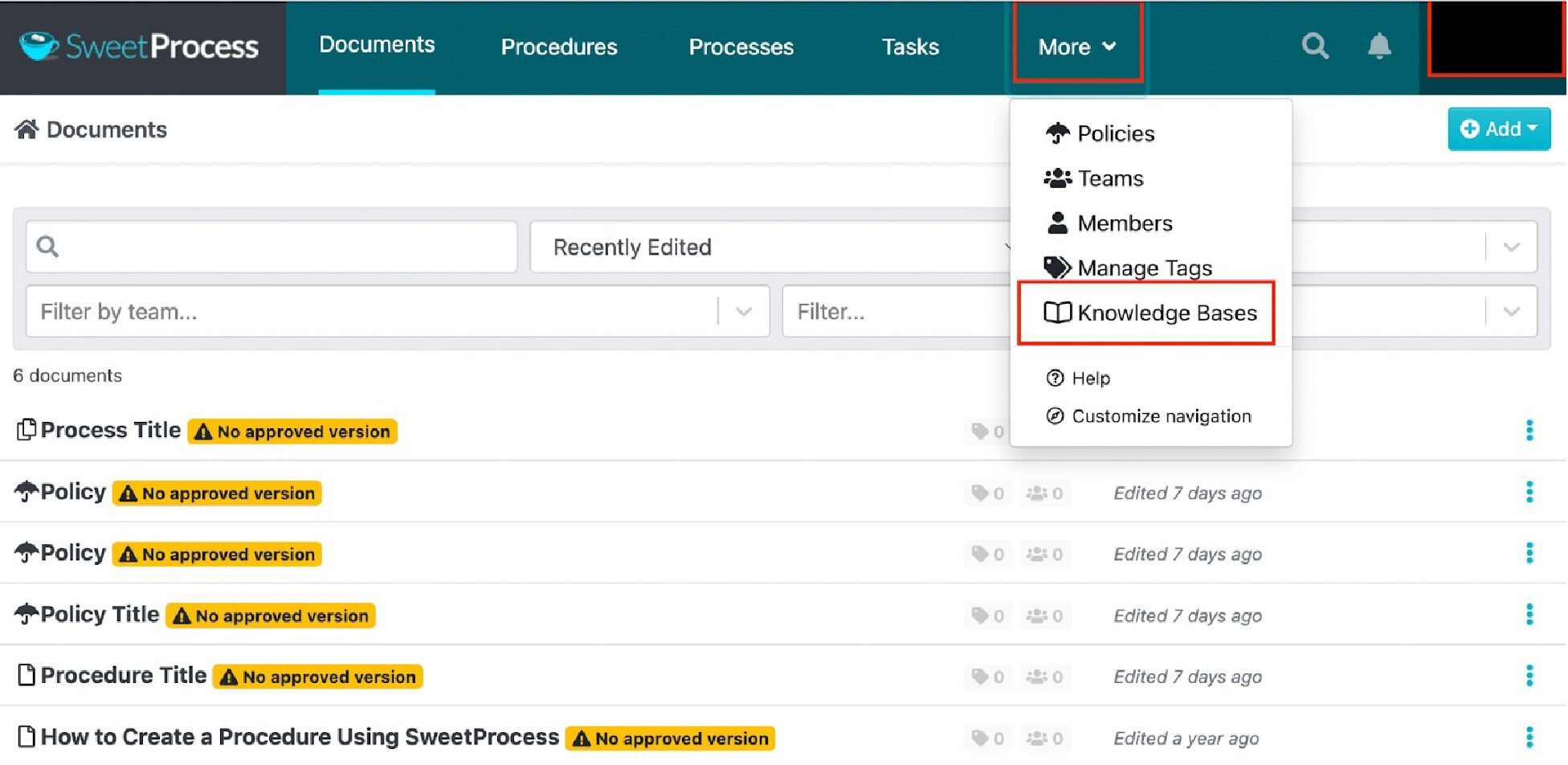
- You’ll see a list of all your knowledge bases.
- Choose the one you need by clicking on the three dots on the right. From here, you can edit details to improve your knowledge base, and duplicate or delete it.

SweetProcess has been an essential customer onboarding tool for several businesses.
Stephanie Chavez, chief marketing officer at Zen Media, faced operational inefficiencies despite the company’s success in PR services for tech clients. Employees relied on informal, inconsistent workflows, which caused delays when key team members were unavailable.
The company lacked a centralized system for documenting processes. Employees used personal methods to complete tasks, leading to inconsistent results and difficulties when someone was absent. Chavez discovered SweetProcess during a LinkedIn marketing class.
Intrigued by its potential, she implemented it and found it to be the perfect solution for standardizing workflows and improving team efficiency. Since adopting the tool, the company now has:
- Efficient onboarding and training: New hires access documented workflows on SweetProcess, speeding up onboarding and providing ongoing support.
- Improved quality control: Standardized workflows ensure consistent results and scalable operations.
- Centralized knowledge base: A comprehensive hub allows any team member to step in and complete tasks seamlessly, minimizing disruptions.
Another beneficiary of SweetProcess is Jacob Syrytsia, the CEO of AEJuice, who built his $2 million business from the ground up. While offering innovative video creation tools, Jacob faced inefficiencies in customer support due to a lack of streamlined processes and documentation.
The company’s growing support team constantly required guidance. Despite creating basic guides, questions persisted, consuming his time and hindering his efficiency. He says, “Every day, I’d get five to ten questions, even after providing a guide.”
SweetProcess was recommended during an online course. Jacob signed up after a 14-day trial and immediately saw its impact, allowing him to take a vacation without worrying about business operations. Since adopting SweetProcess, the company now has:
- Effective documentation: Jacob can create detailed, step-by-step guides with screenshots and videos. Team members now follow instructions independently.
- Efficient employee onboarding: New hires access self-paced training through SweetProcess, covering everything from product use to basic skills. This eased the employee onboarding process.
- A centralized knowledge base: SweetProcess became the central hub for instructions, accessible across departments and managed by team leaders.
SweetProcess revolutionized Jacob’s workflow, allowing him to focus on scaling AEJuice and entering new markets.
You can also transform your company’s operations with SweetProcess just like Zen Media and AEJuice did. Try our free 14-day trial and experience the difference!
Key Components of the Customer Onboarding Process
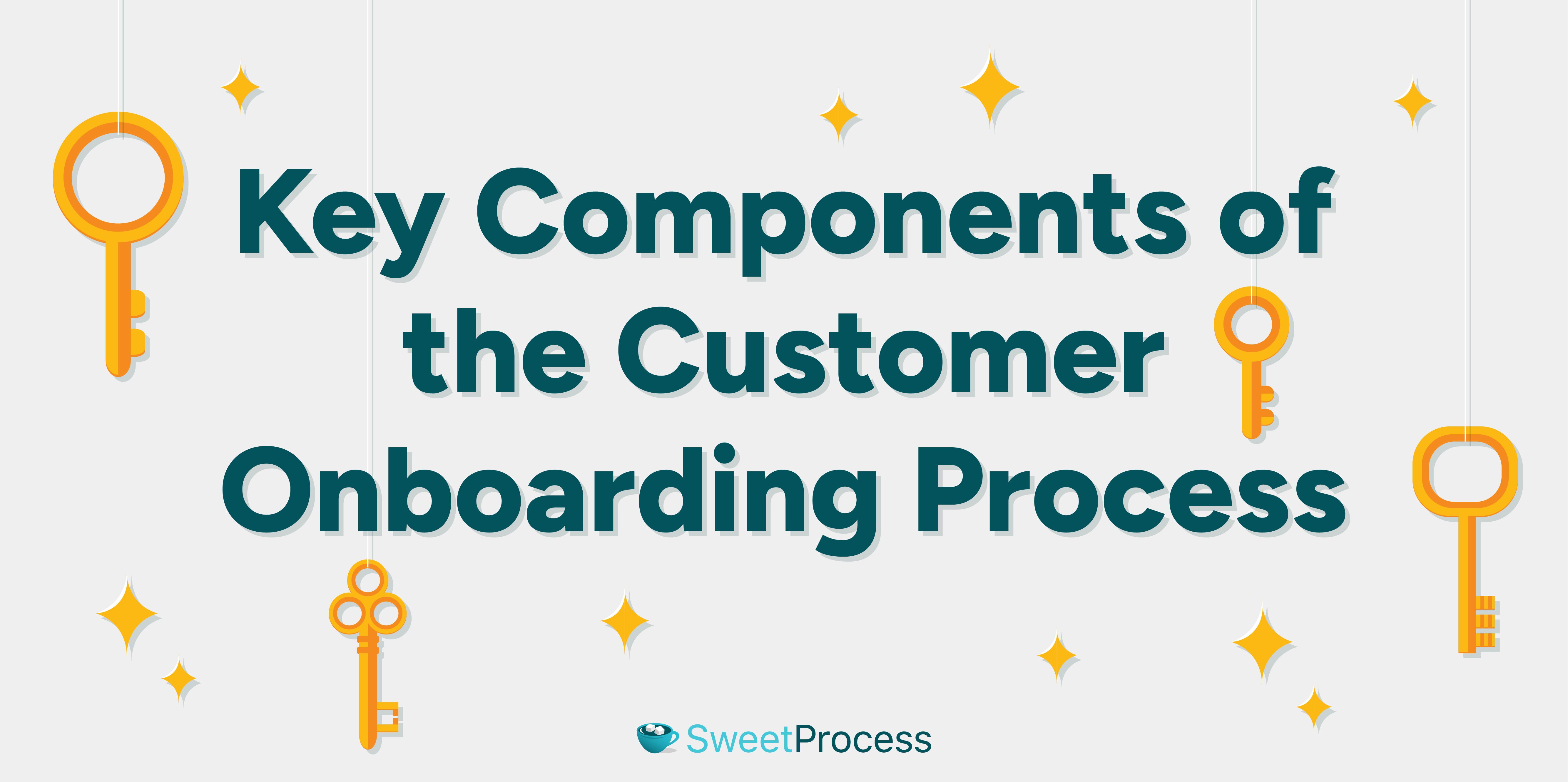
You can’t go wrong with a well-structured customer onboarding process. It’s your best path to achieving higher customer retention rates. Let’s dive into the key components of this process and explore how they work:
Initial Contact and Welcome
How do you make your customer feel during the initial contact? A warm and personalized welcome is ideal because it sets the stage for a positive onboarding experience. As you send a welcome email thanking your customers for their purchase, keep it friendly.
A simple message like, “We’re here to make your journey seamless!” can make customers feel confident and connected. Whether through a friendly email, a welcome call, or an automated message sent via client onboarding software, ensure customers feel valued and supported from the very first interaction.
Information Gathering
What are your customer goals and needs? What is their technical expertise? Which challenges do they need to solve?
Use these questions to craft your onboarding strategy. You can incorporate surveys, forms, or direct calls to collect this critical information. Once you have all the customer data, tailor the onboarding process to their needs.
For instance, if you’re onboarding a tech-savvy customer, you might opt for a self-service approach with a comprehensive knowledge base. In contrast, a less tech-savvy customer might benefit from more personalized support.
Design Onboarding Materials
Onboarding materials guide customers through the initial setup and familiarize them with your product or service. This could include:
- Interactive tutorials: They break down complex tasks into smaller, manageable steps.
- Video tutorials: Visual demonstrations can be more effective than written instructions.
- Checklists: They provide a clear roadmap for the onboarding process.
- FAQs: To answer common questions to reduce support tickets.
Furthermore, you can create a quiz your customers can use to determine whether they understand the processes and procedures. Remember, the key to effective onboarding materials is to keep them concise, clear, and visually appealing.
Build a Knowledge Base
Take Netflix as an example. Its intuitive help center empowers users to resolve common issues like password resets or streaming quality, saving time for both customers and support teams. Such a centralized knowledge base acts as a self-service hub for customers to find answers quickly.
It should include detailed articles, troubleshooting guides, and how-to videos. This can reduce the burden on your support team and improve customer satisfaction. Consider using a customer onboarding software with a knowledge base feature to organize your content and make it easily searchable.
Feedback Collection
You need to know whether your customers are satisfied with the quality of products and services. As you onboard them, use surveys, in-app feedback forms, or live chats to collect feedback. This way, you can identify gaps and make improvements to your services.
Customers are more likely to stick to your brand when you actively listen and address issues from the beginning.
Measure Success
No process is complete without measuring its effectiveness. Track key metrics such as:
- Time to value: How long does it take for customers to use your product or service?
- Customer satisfaction: How satisfied are customers with the onboarding process?
- Churn rate: How many customers are dropping off during or after onboarding?
Analyzing these metrics helps you assess whether the company’s onboarding strategy is delivering results.
Looking for a way to streamline data collection? Implementing a client intake form allows you to gather key customer details upfront, making it easier to track engagement and optimize your processes.
7 Customer Onboarding Examples You Can Learn From
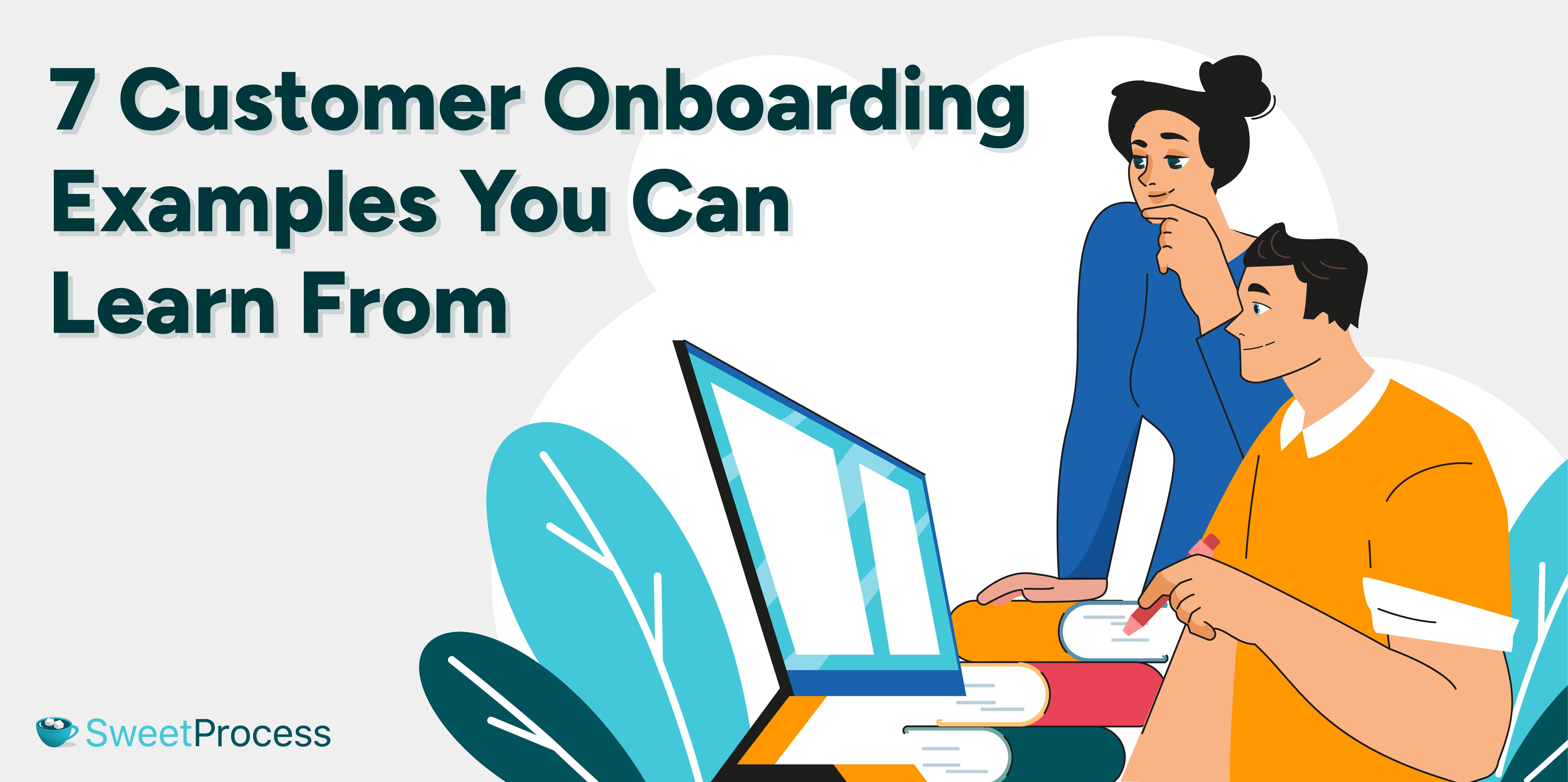
Successful business owners have mastered the art of creating exceptional customer onboarding processes. If you are looking to improve your process or create a new one, here are some real-life examples you can learn from:
Grammarly
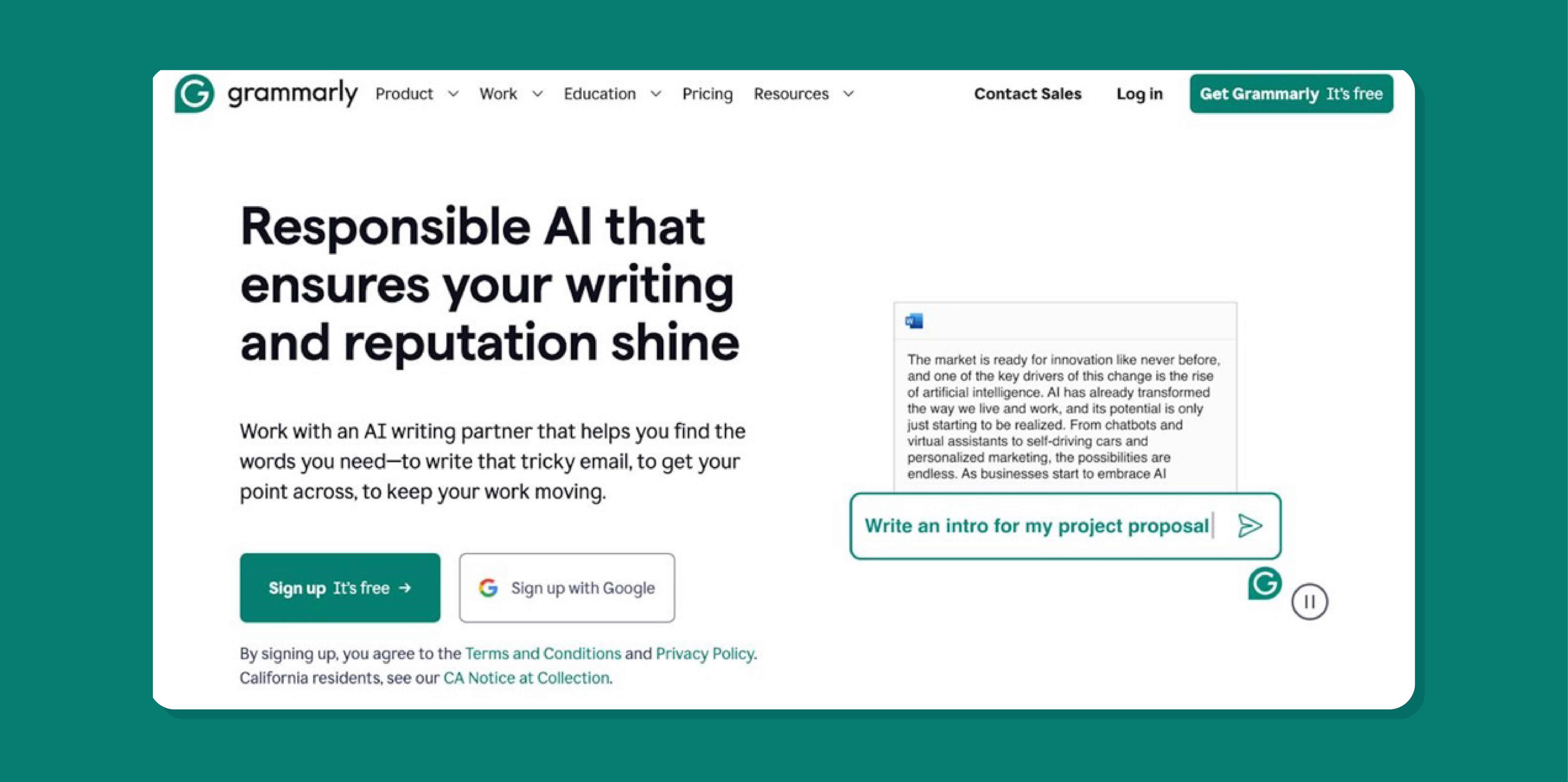
Grammarly’s onboarding process focuses on personalization and ease. Users can sign up using their email address.
Upon signing up, users are guided through a quick setup where they select their writing goals: academic, casual, or professional. It then offers a live demo, showing how the tool corrects grammar and enhances writing style in real-time.
What makes Grammarly shine? Its onboarding prioritizes immediate value, showing users how to integrate Grammarly into their workflow—whether in emails, documents, or browsers. This simplicity ensures that users can start improving their writing within minutes.
Duolingo
With Duolingo, the onboarding process is built on fun and motivation. Users choose a language to learn and their daily commitment level from the get-go. The app provides a quick tutorial, introduces gamified lessons, and rewards users with badges for progress.
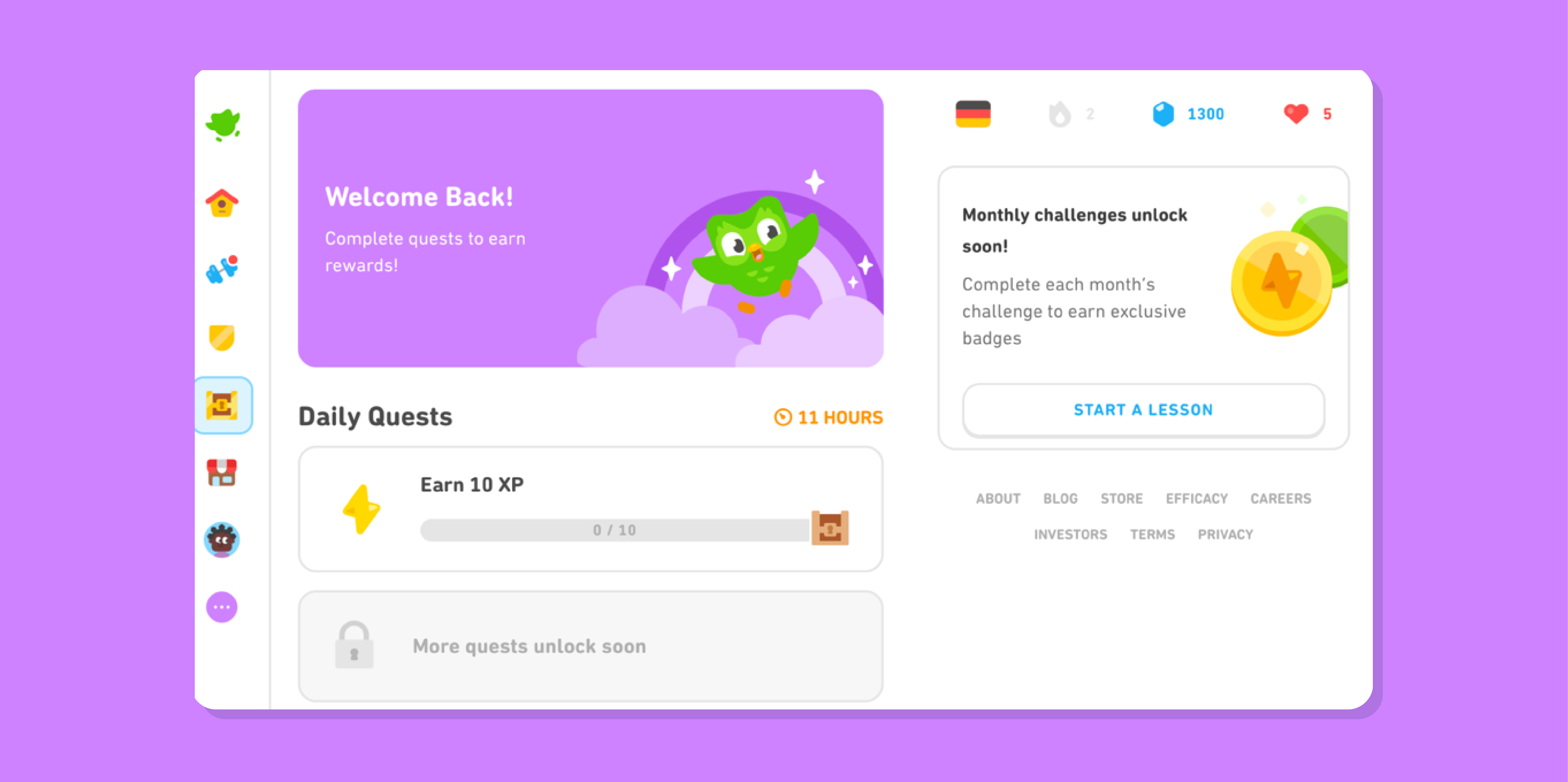
Gamification hooks users and encourages consistent engagement. It’s a clever way to keep learners motivated while they navigate a potentially daunting task—in this case, learning a new language.
They also send emails to remind users to keep learning.
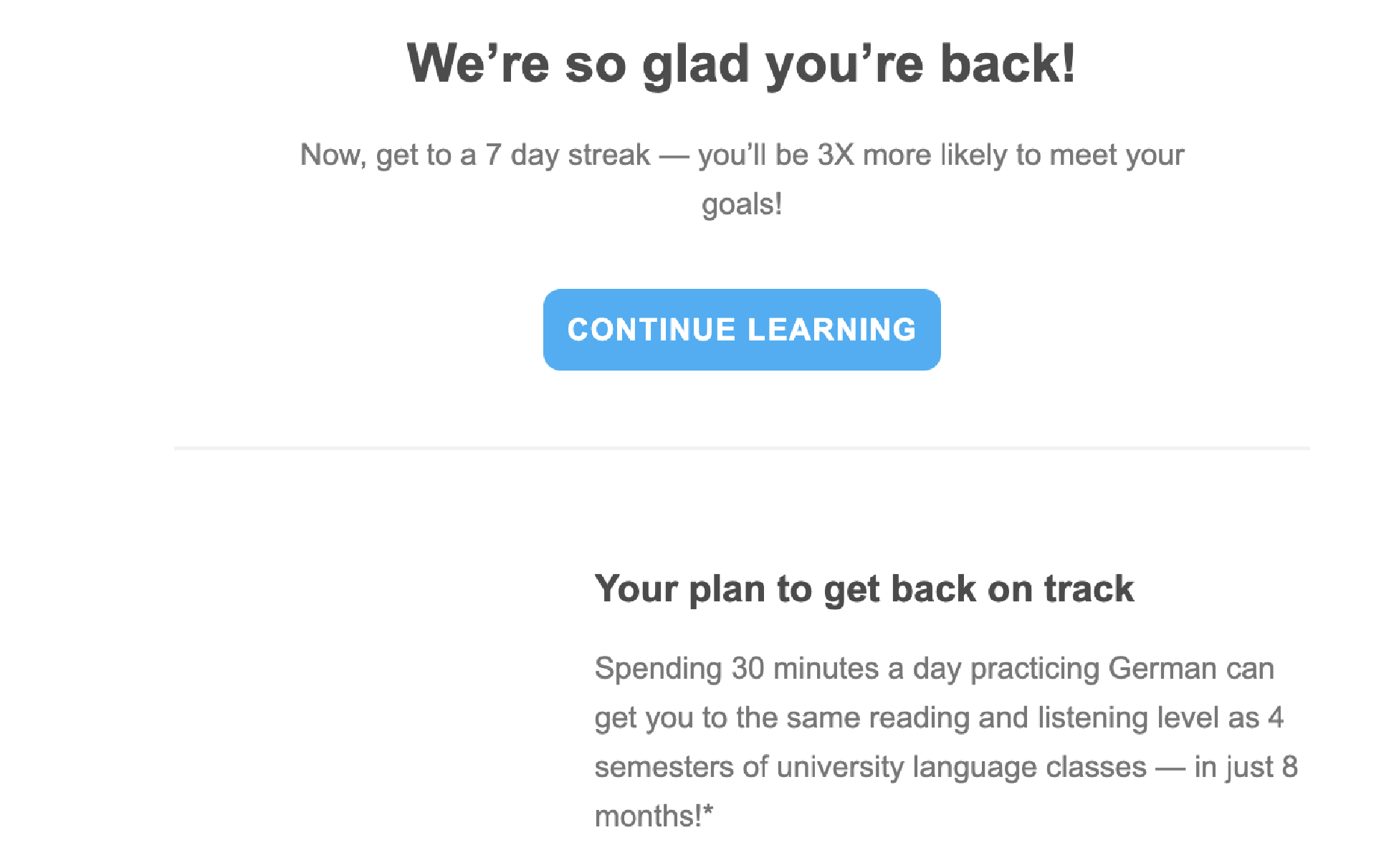
Slack
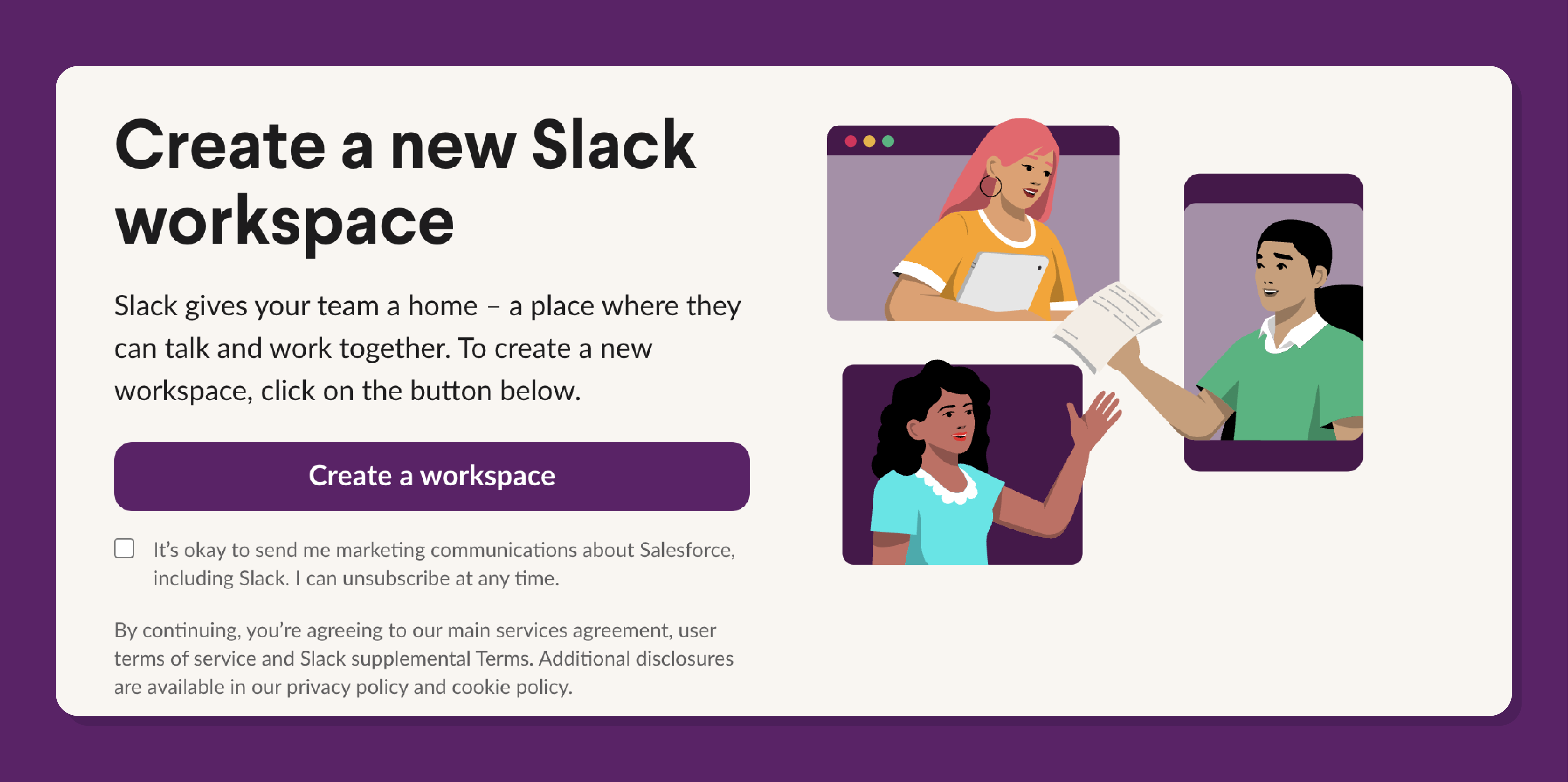
Slack uses an interactive onboarding strategy. From the home page, you can create a workspace. You’ll then be guided to add a name for your workspace, invite team members, and start sharing messages. The well-placed prompts make the experience feel seamless.
The onboarding process focuses on collaboration and team communication right from the start.
Hotjar
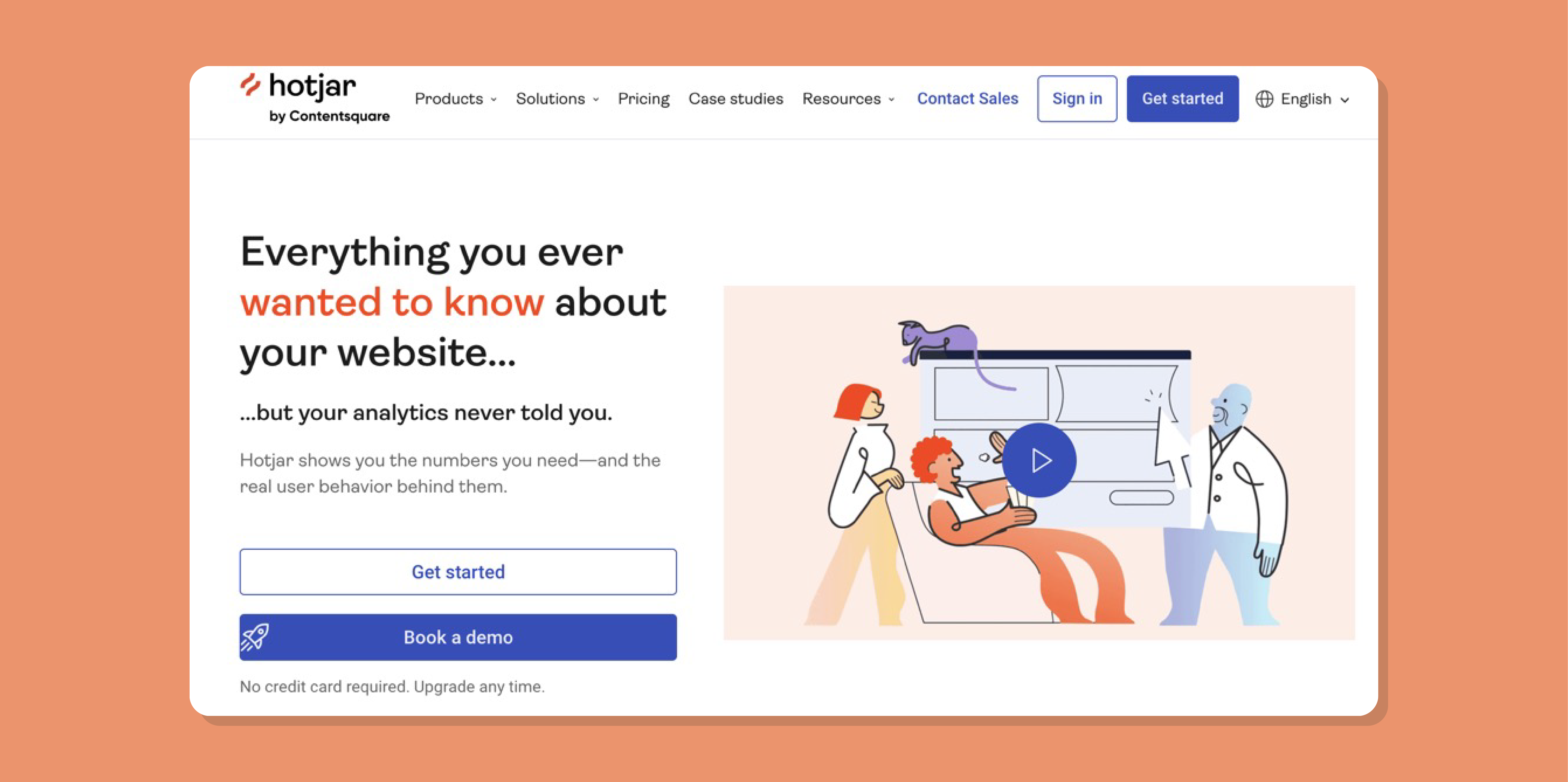
Hotjar’s onboarding offers hands-on experience. After signing up, users can install the tracking code with detailed instructions and view a demo of how Hotjar captures user behavior. This approach immediately shows customers the tool’s impact on their website analytics.
With Hotjar, customers can see its value without unnecessary delays.
Dropbox
Dropbox keeps its onboarding straightforward. Users are welcomed with a clean interface and prompted to download the app or install Dropbox on multiple devices. You can also choose what you’ll be using Dropbox for.
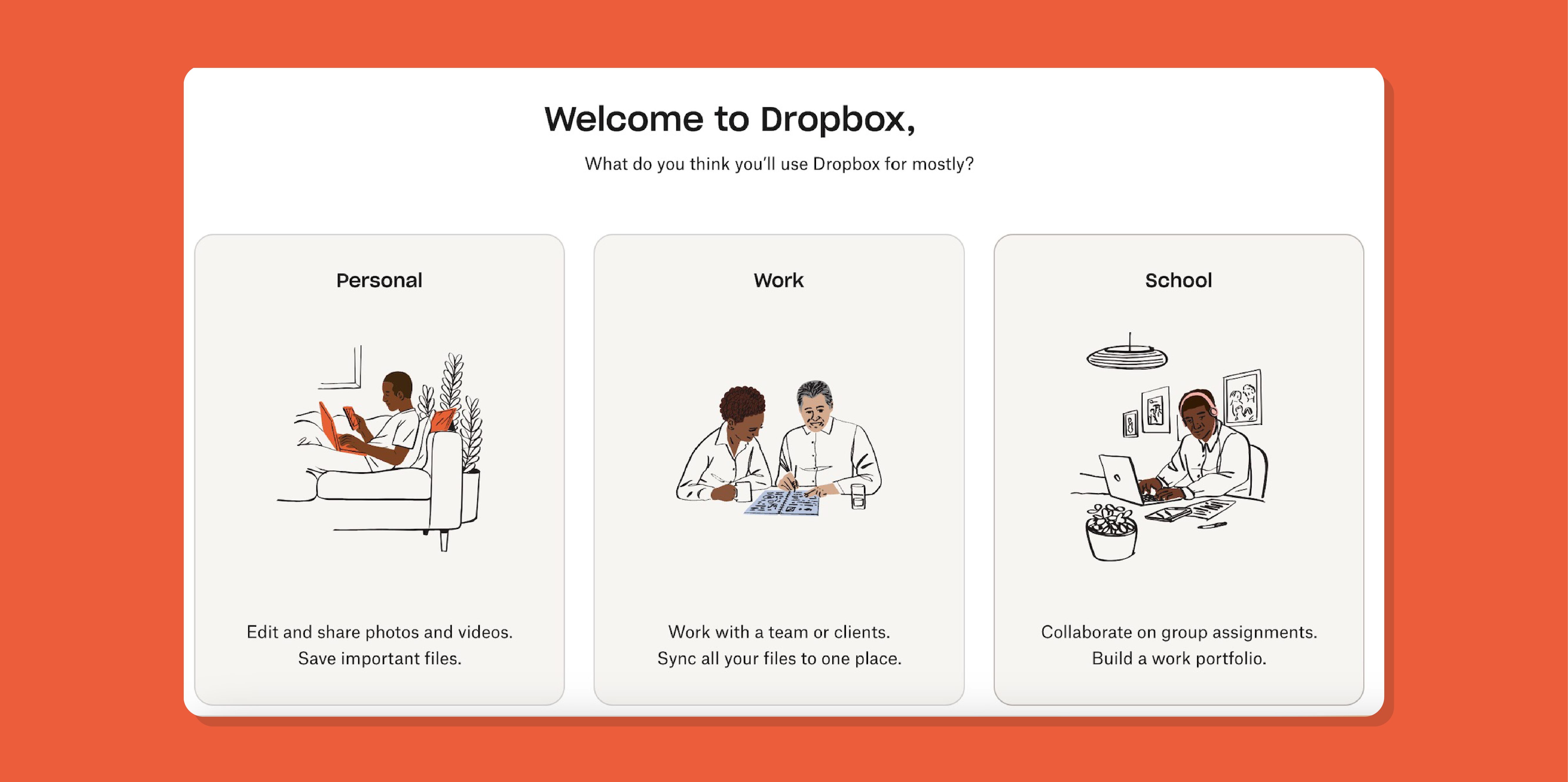
Once you sign up for this tool, you experience the core value. You can also start inviting members and uploading files immediately.
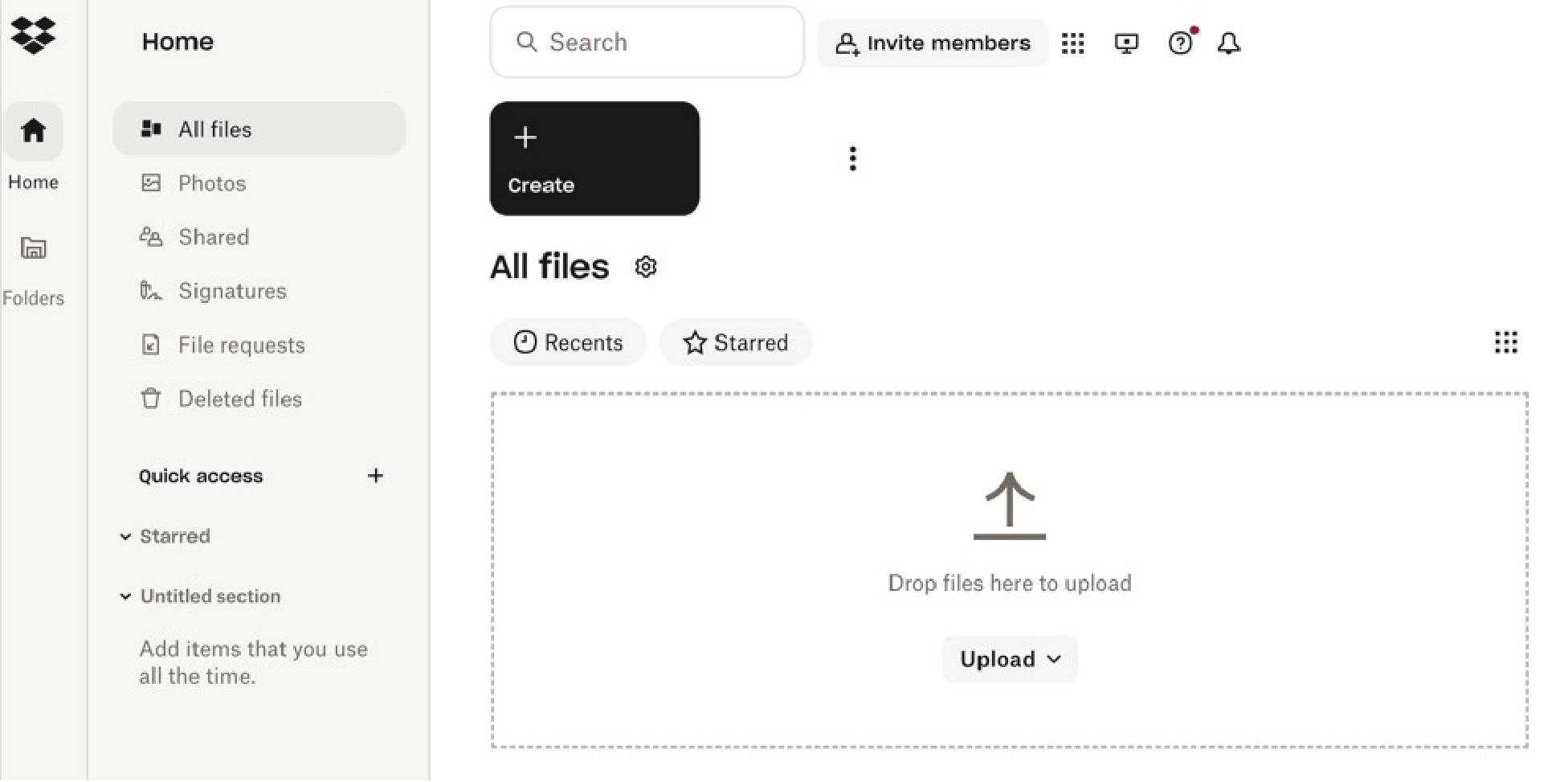
Calendly
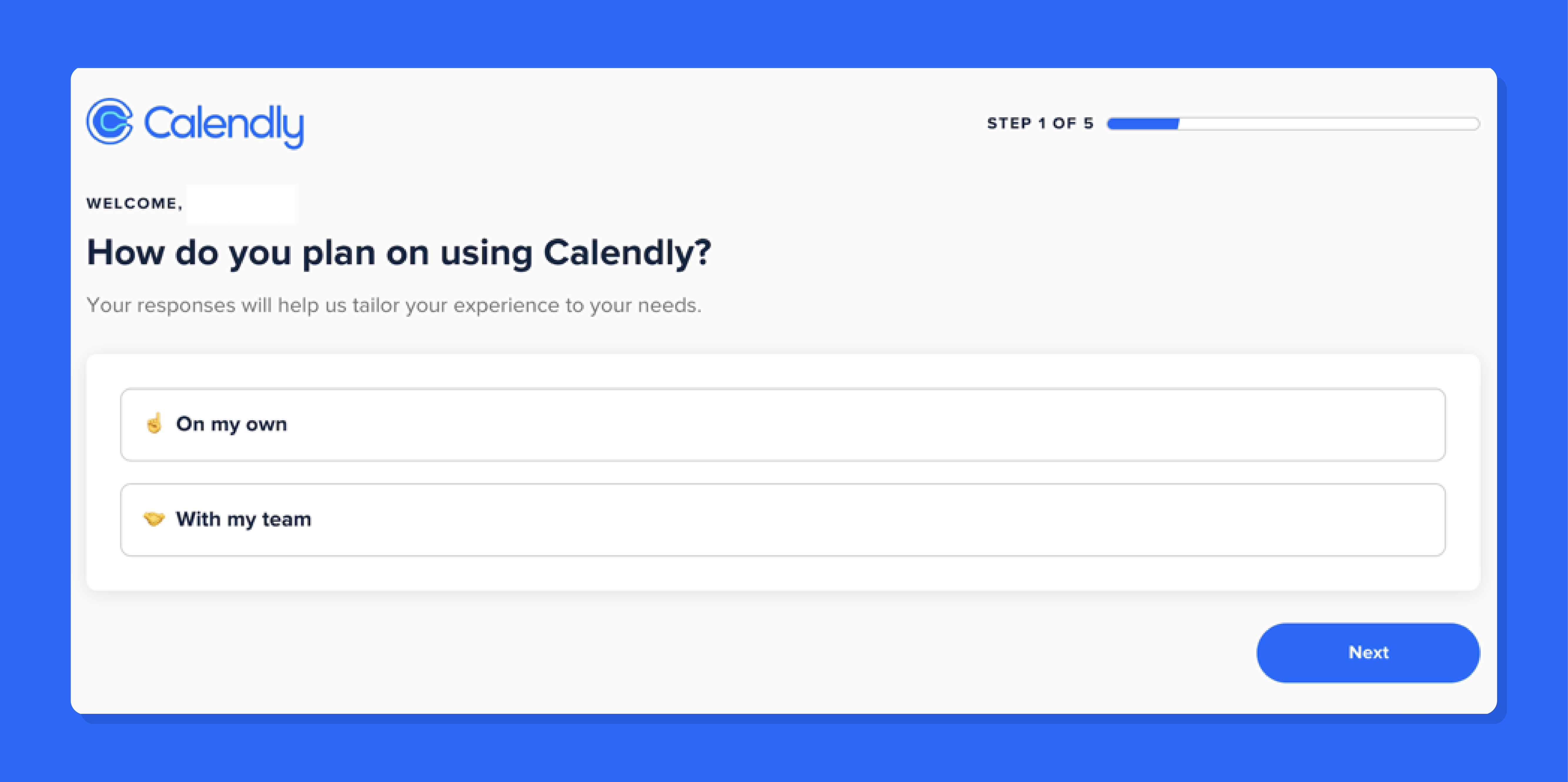
Calendly’s onboarding is built around quick action. After signing up, users are guided through setting their availability, syncing their calendars, and sharing their scheduling link. The platform highlights how its tools streamline appointment booking.
This tool focuses on ease of use and automation, showing users how quickly they can eliminate back-and-forth emails about scheduling.
Evernote
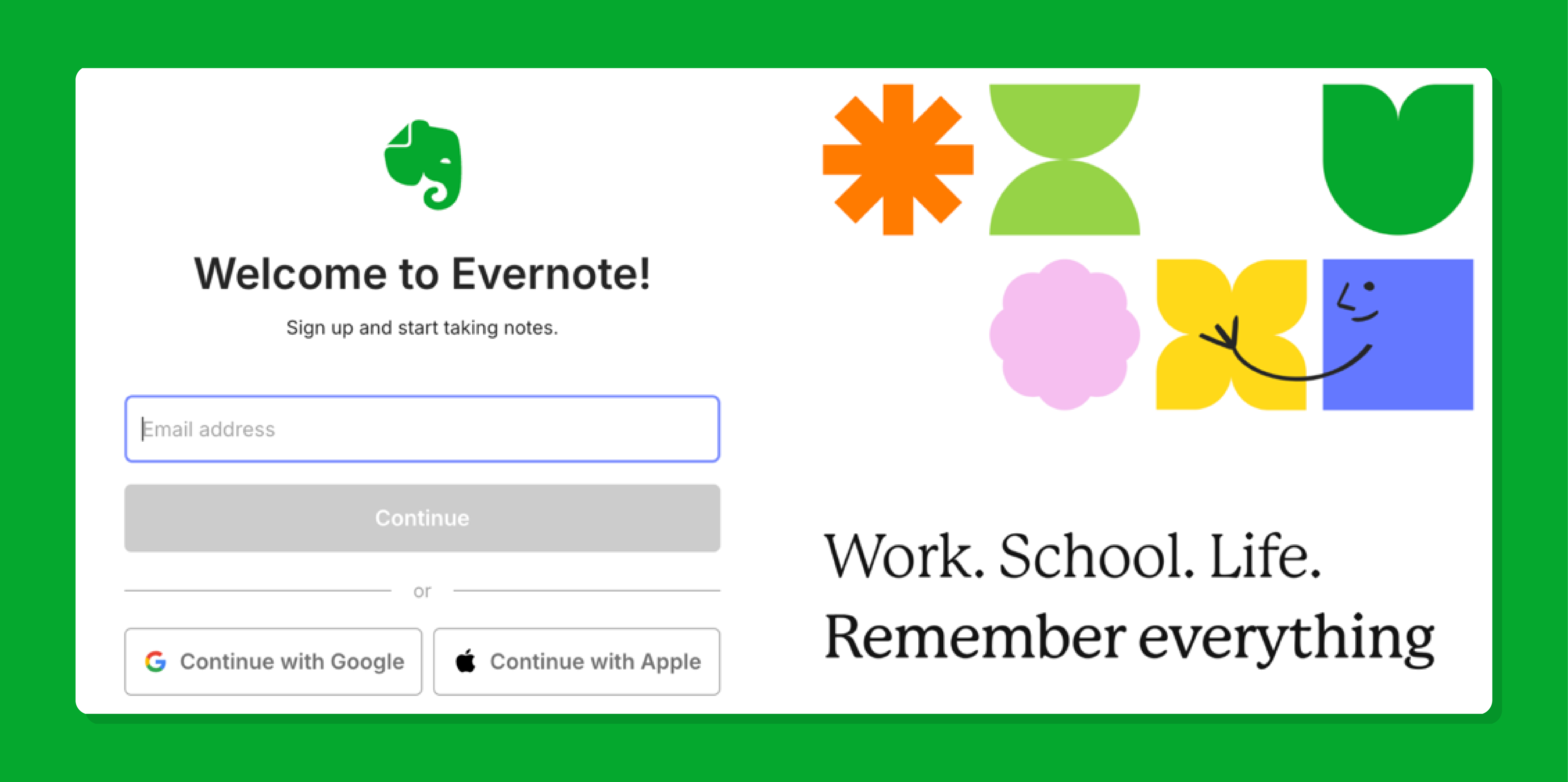
Evernote’s onboarding process showcases the app’s versatility. New users are encouraged to create their first notes and explore templates for various use cases, from to-do lists to meeting notes.
What makes it memorable? Evernote personalizes the experience by encouraging users to dive into their specific productivity goals.
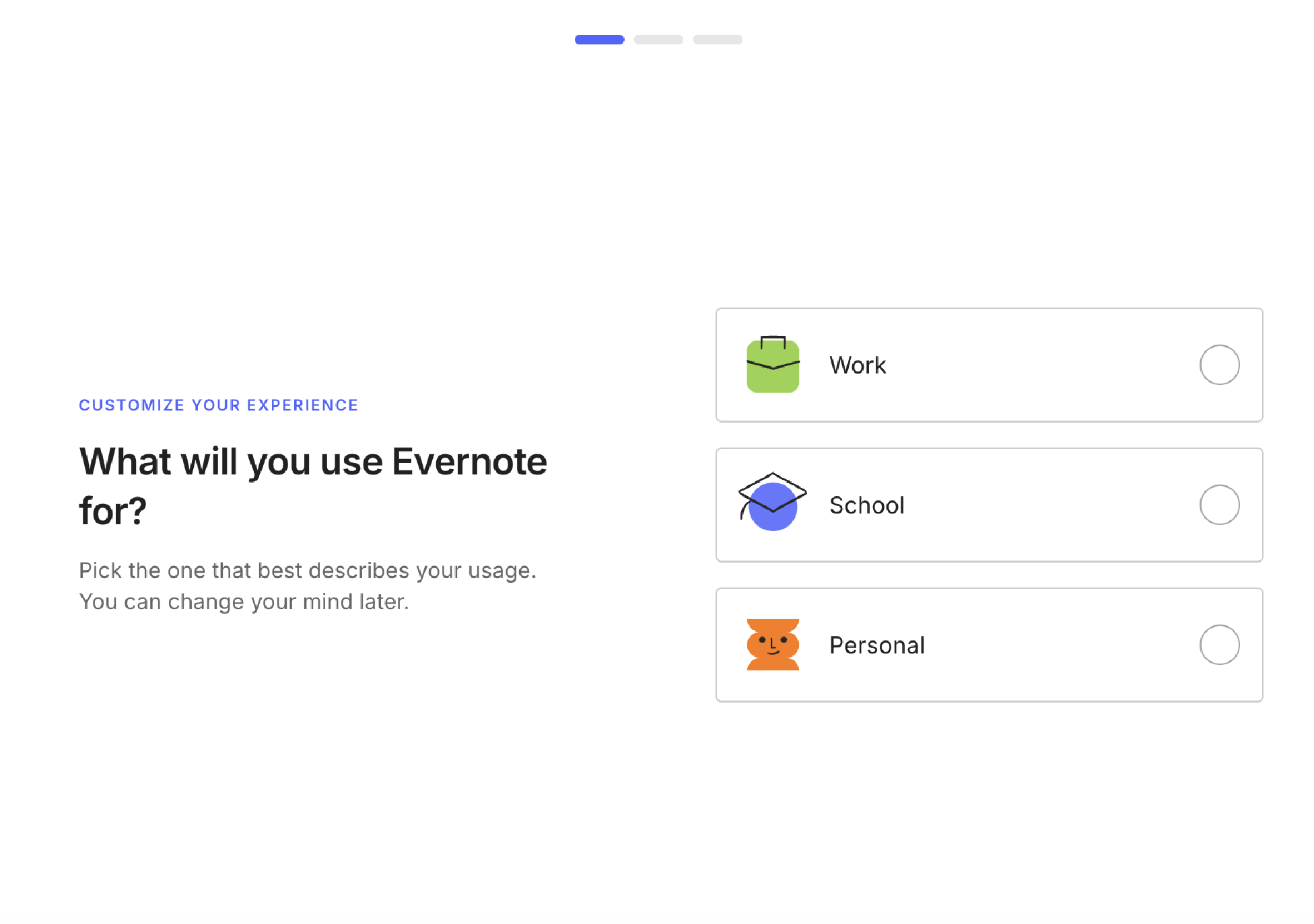
Customers can see how the tool can enhance their daily routines.
These examples demonstrate that great onboarding is all about understanding your users, addressing their needs, and making the process as simple and engaging as possible. Want to achieve the same? Start your free trial of SweetProcess today!
Benefits of Customer Onboarding Process in an Organization
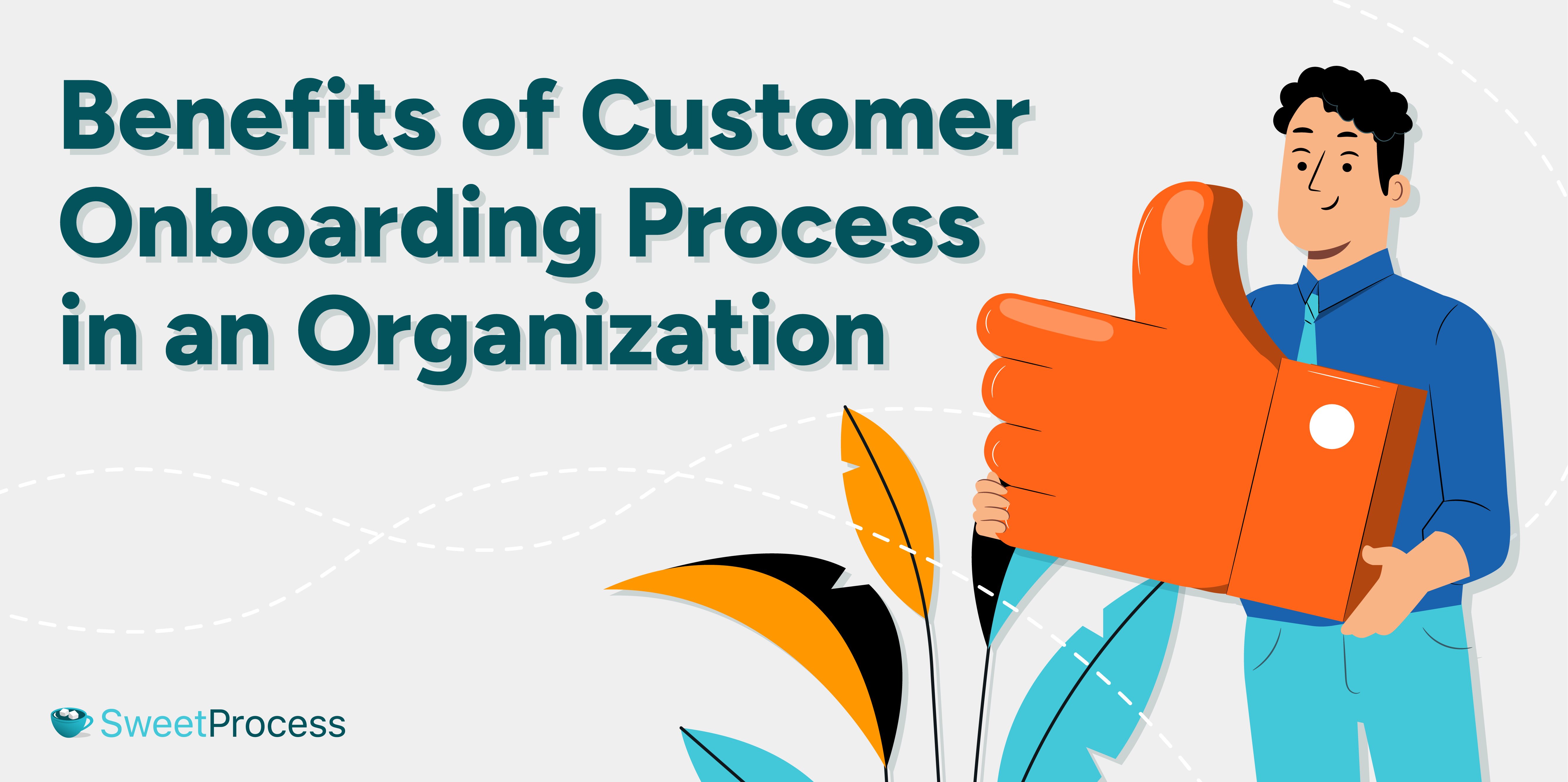
A well-designed customer onboarding process brings several key benefits to your organization. Let’s take a closer look:
Opportunity for Upselling and Cross-Selling
According to McKinsey, cross-selling can boost your company’s profits by 30% and increase sales by 20%. The onboarding period is the perfect time to introduce customers to additional products and services that complement their original purchase.
For example, if a customer is onboarding for a basic plan, you can offer them a premium plan with advanced features and more benefits during the process. Think of how Amazon upsells by offering Prime memberships to new users. This approach keeps customers engaged because they are getting more value.
At the same time, your business benefits from making more sales, which translates to revenue.
Referral/Customer Advocacy
Happy and satisfied customers become natural brand advocates. Once you create a seamless onboarding experience for new users, they are more likely to recommend your product or service to their friends, family, and colleagues.
These word-of-mouth referrals can attract more customers to your business and boost your overall sales. You can use onboarding surveys to determine which clients might be more willing to join a referral program.
Customer Insights
Data has become one of the important components of business success. You can use insights to understand customer preferences, pain points, and behaviors. For instance, you can use a client onboarding form to collect information about why they need your product and services to help you create personalized recommendations.
To avoid starting from scratch, you can use any of these client intake form templates to collect customer data. Once you have this data, you can refine your product and improve the customer experience.
Enhanced Brand Perception
Did you know that 70% of customers make a purchasing decision based on the quality of customer service they receive? Based on this, it’s very easy for customers to drop off from the onboarding process if their first impression is negative. Failing to provide proper support and guidance at the set-up stage can influence customers to switch to competitors.
Your onboarding process is your chance to show professionalism and value, which translates to a stronger brand reputation.
Customer Onboarding Best Practices and Tips
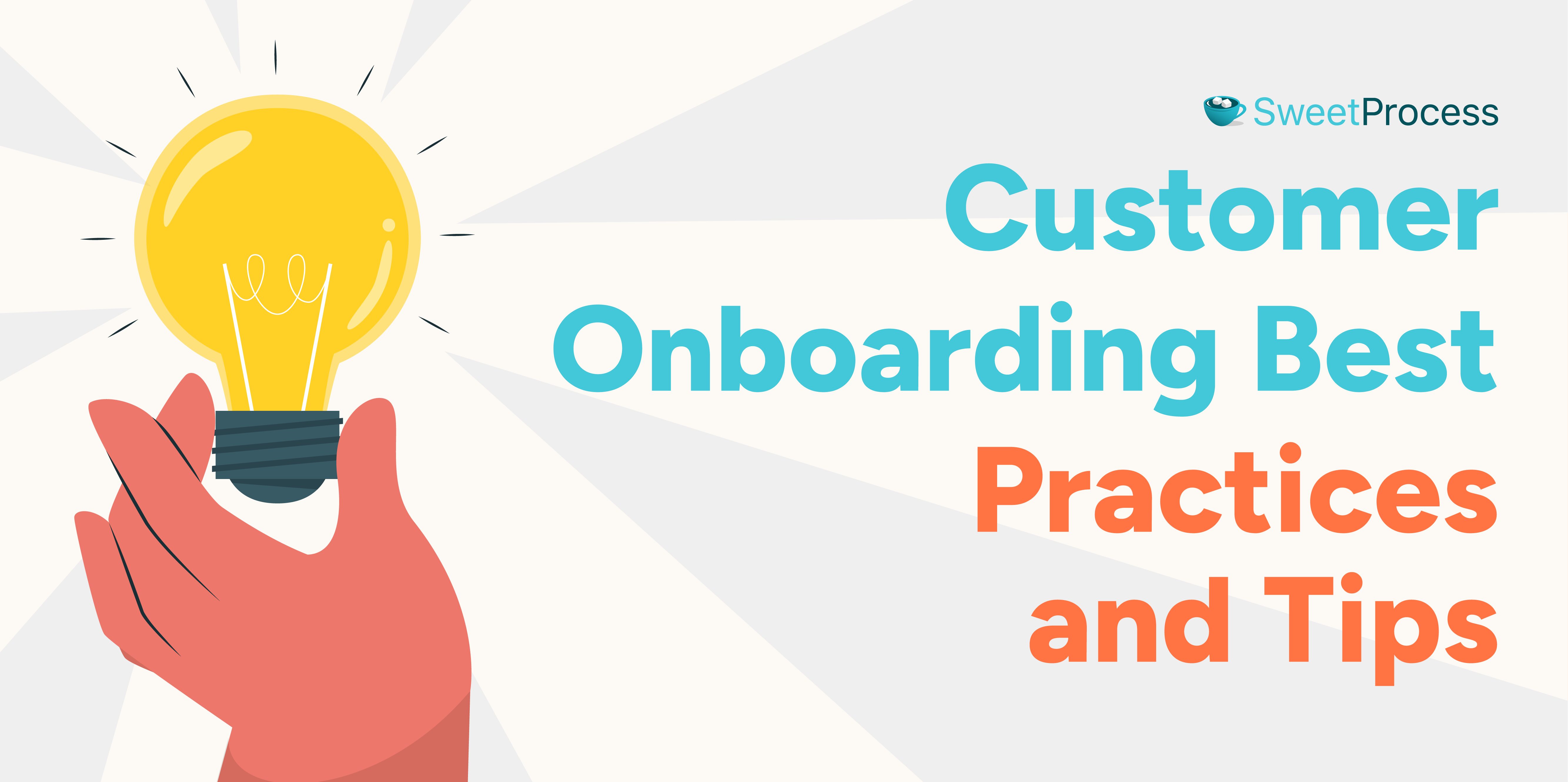
How do you ensure a successful customer onboarding process? Simple—you follow some best practices that help your customers. Here are some actionable tips you can use:
Use an Email Automation Platform to Send Educational Content
Email remains one of the most popular channels for customer onboarding. With automated emails generating more than 31% of company email orders, it would be advantageous to leverage an email automation platform for your onboarding process. Tools like Mailchimp create automated email sequences based on user actions.
With the right platform, you can send tutorials, help guides, and usage tips to guide customers through the setup process. You can also use them to answer common questions and inform your customers about the products and services.
Introduce Your Product with a Short Video
While it’s common for organizations to send email messages in text form to new customers, a video might be worth even more. An analysis revealed that 89% of customers prefer to view more video content from brands.
Therefore, as you design your onboarding strategy, provide short, engaging videos that can break down concepts and highlight key features of your product or service.
Design Interactive Product Tours
You only have a few minutes to capture your customer’s attention. Consider adding pop-ups and guided walkthroughs highlighting key elements to make the onboarding process engaging. In addition, you can provide product tours that give hands-on experience by asking the customer to complete tasks like inviting team members or answering some questions.
This approach shortens the learning curve and builds confidence in using the tool.
Answer Your Customers’ Questions with Chatbots
Overburdening your customer support team with requests negatively affects the company’s efficiency. They have to deal with new inquiries and address multiple support tickets daily. A chatbot relieves your human agents by providing instant support. They can answer questions in real-time and escalate complex issues to the support staff.
Create Webinars to Let Customers Master Their Skills
If you have a lot of content to share, you can host regular onboarding webinars that allow new customers to interact with product teams. They can use these live sessions to understand product capabilities and learn best practices. It’s a good way to educate customers while addressing questions in real-time.
Want to implement these best practices effortlessly?
Onboard New Customers Seamlessly Using SweetProcess
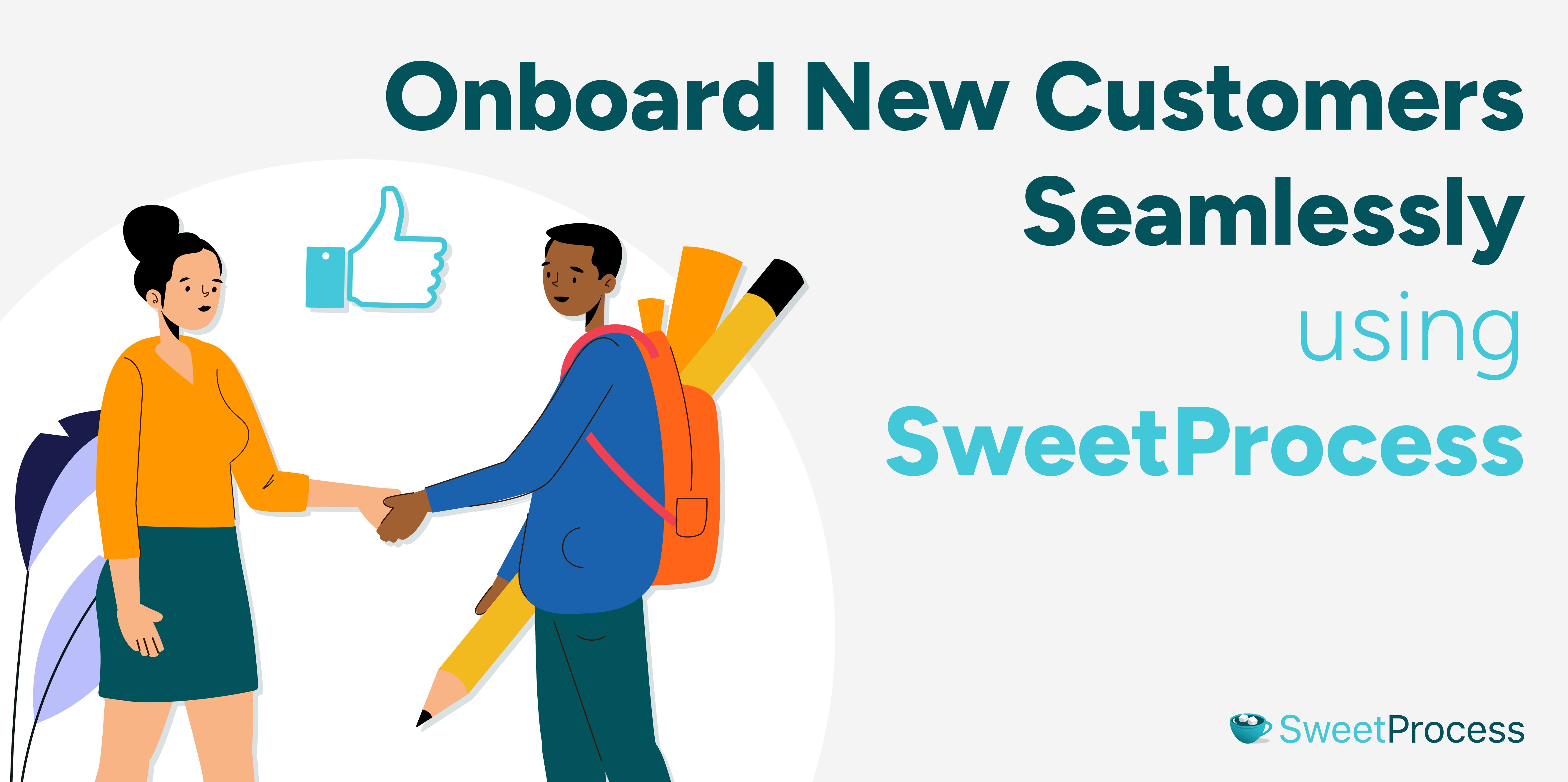
Onboarding shouldn’t be overwhelming for your customers or your team. A strong process paves the way for successful product adoption, better relationships, and greater customer loyalty.
SweetProcess simplifies this journey, equipping you with powerful tools to automate, document, and personalize user onboarding steps.
Let us help you craft an effortless and effective onboarding process. This will give your customers a reason to stay and grow with your brand.
Start your free 14-day trial of SweetProcess now and make every customer onboarding a success story! No credit card is required!
